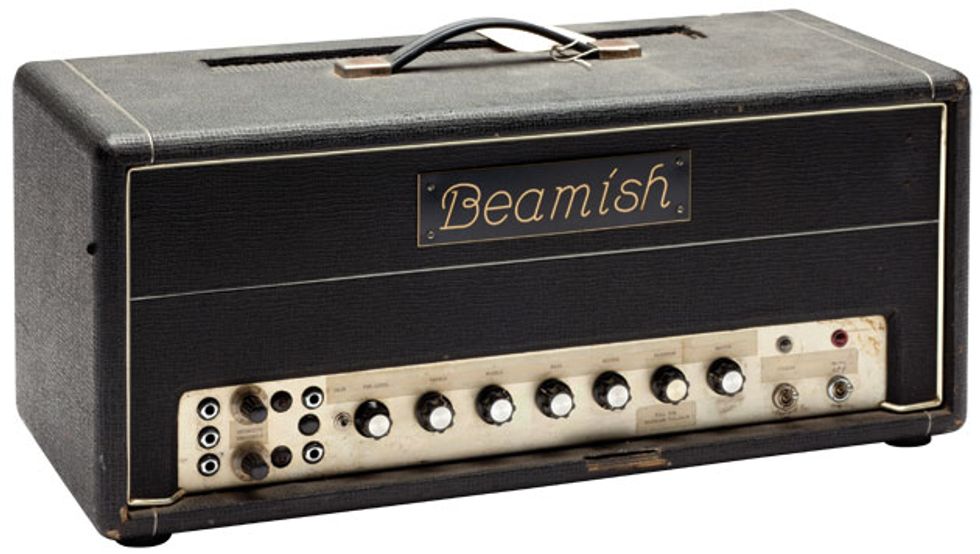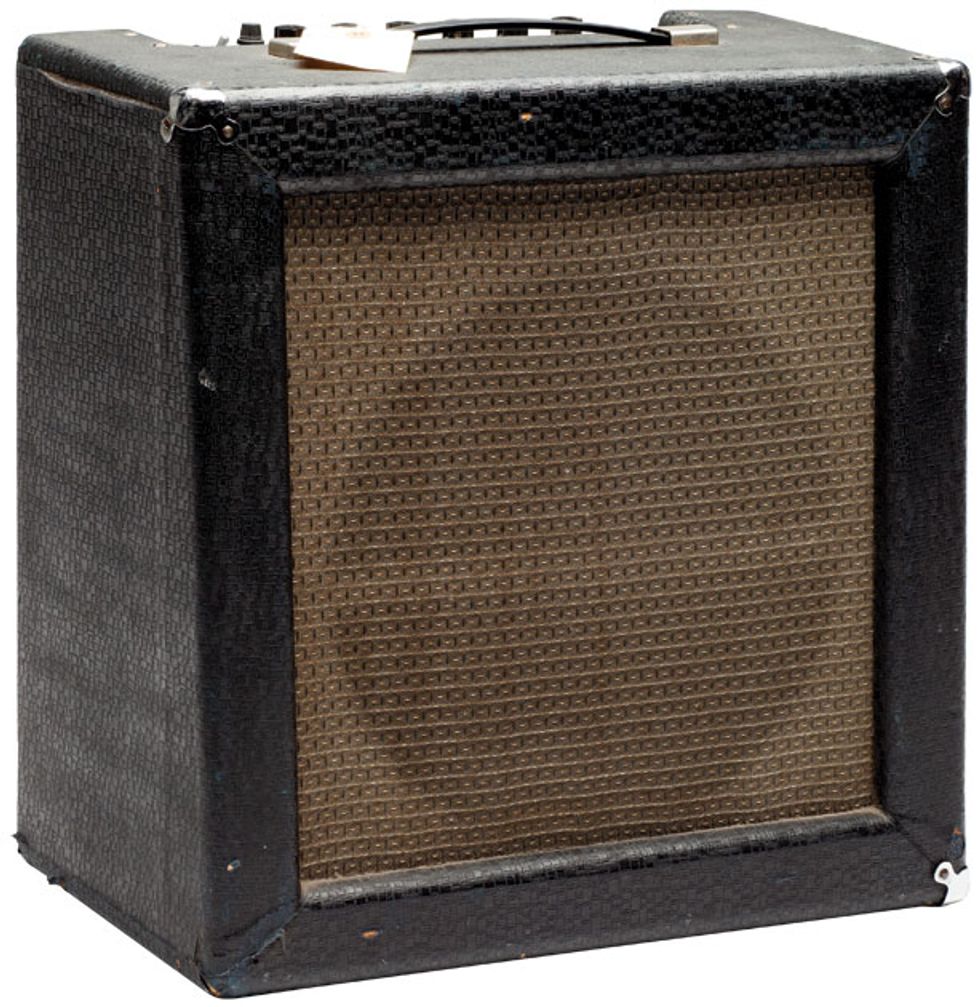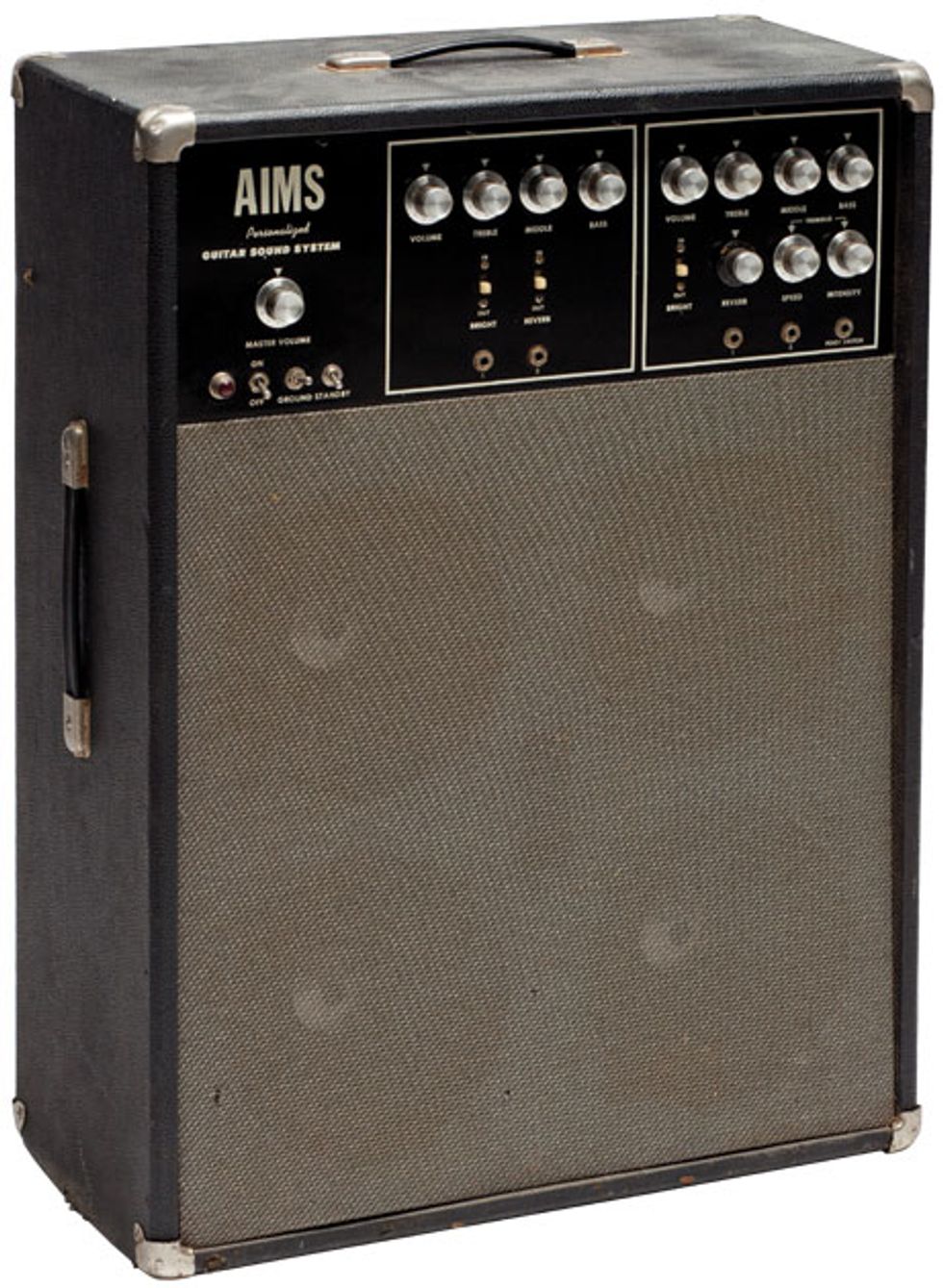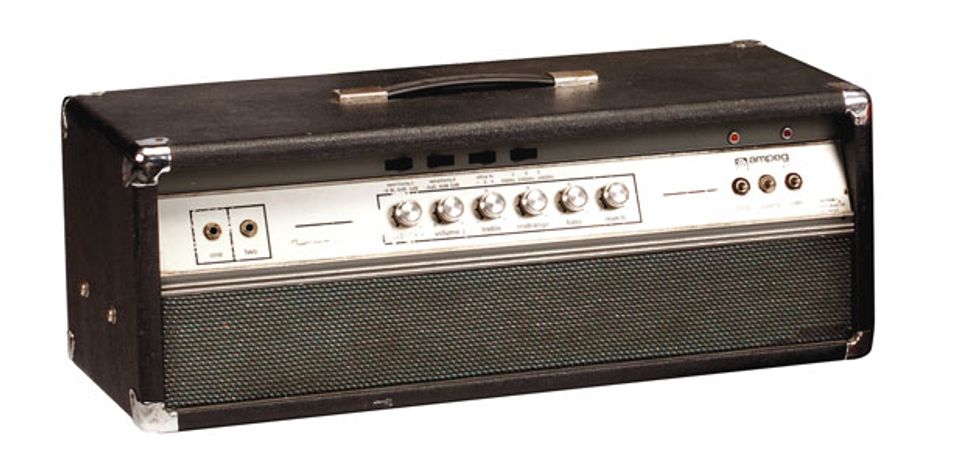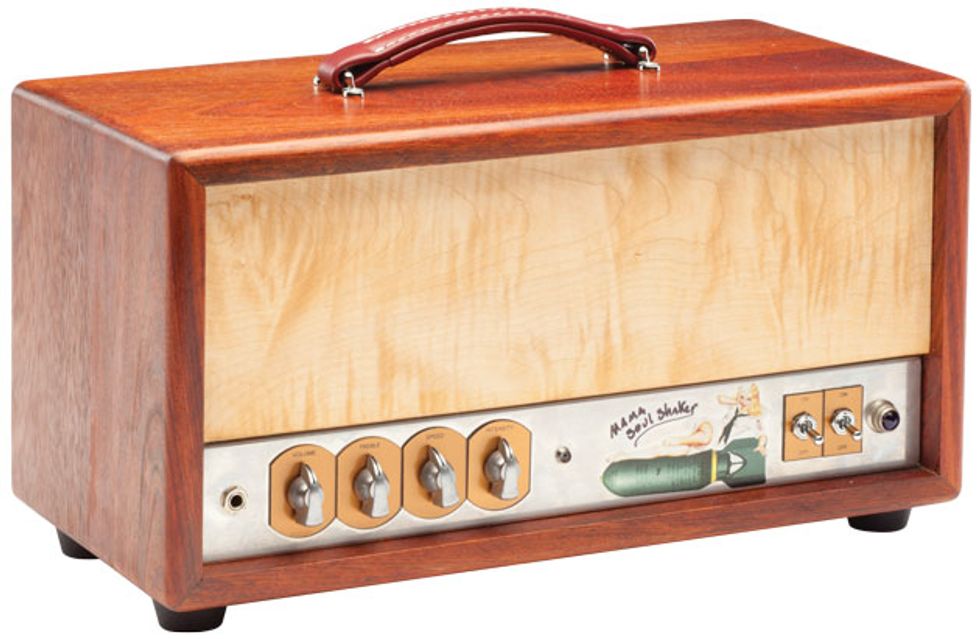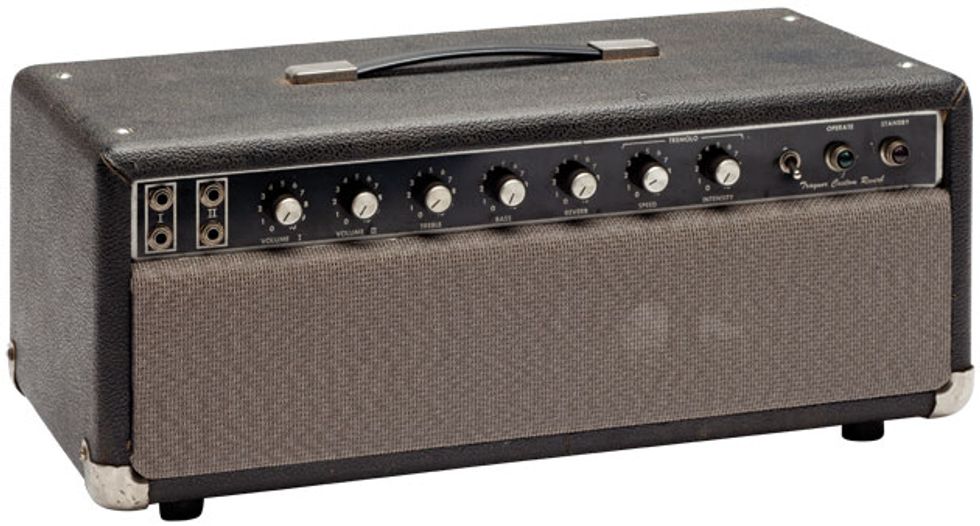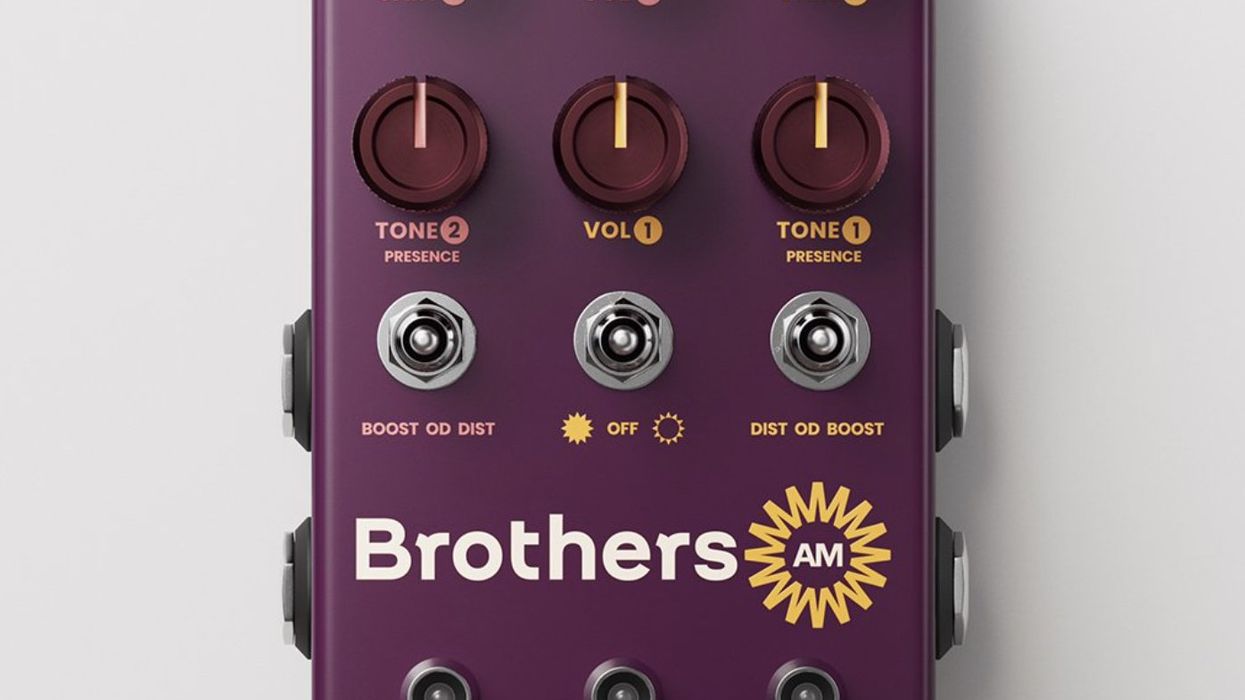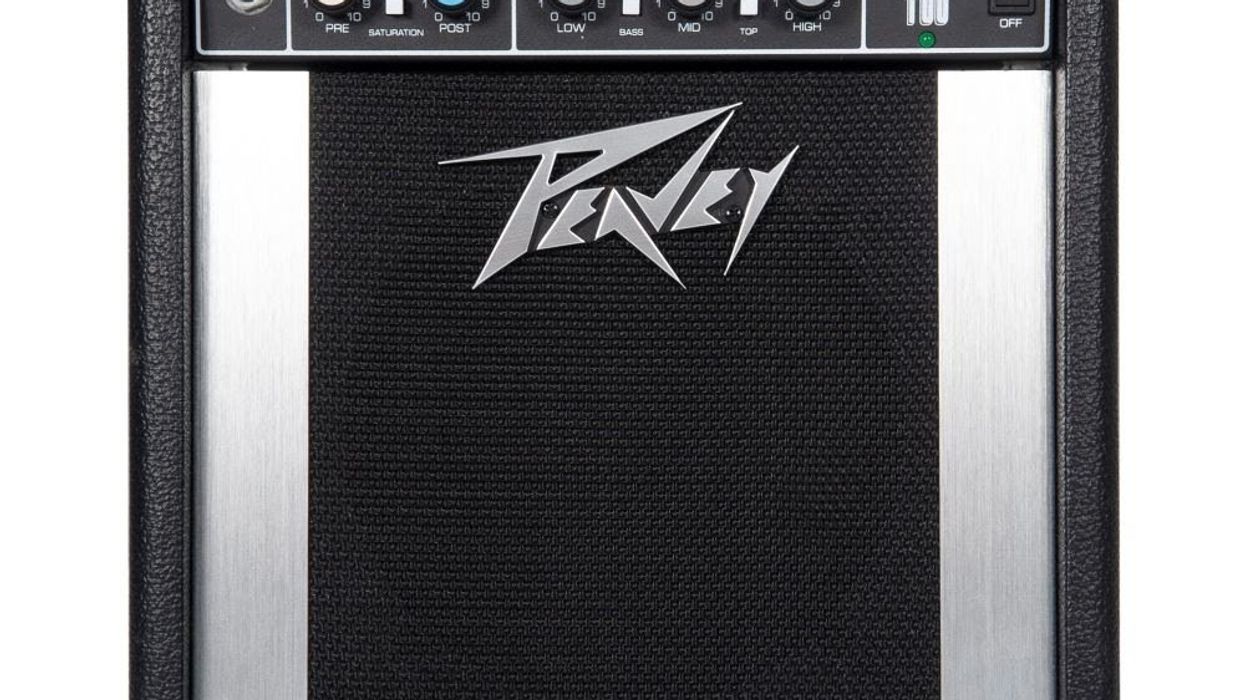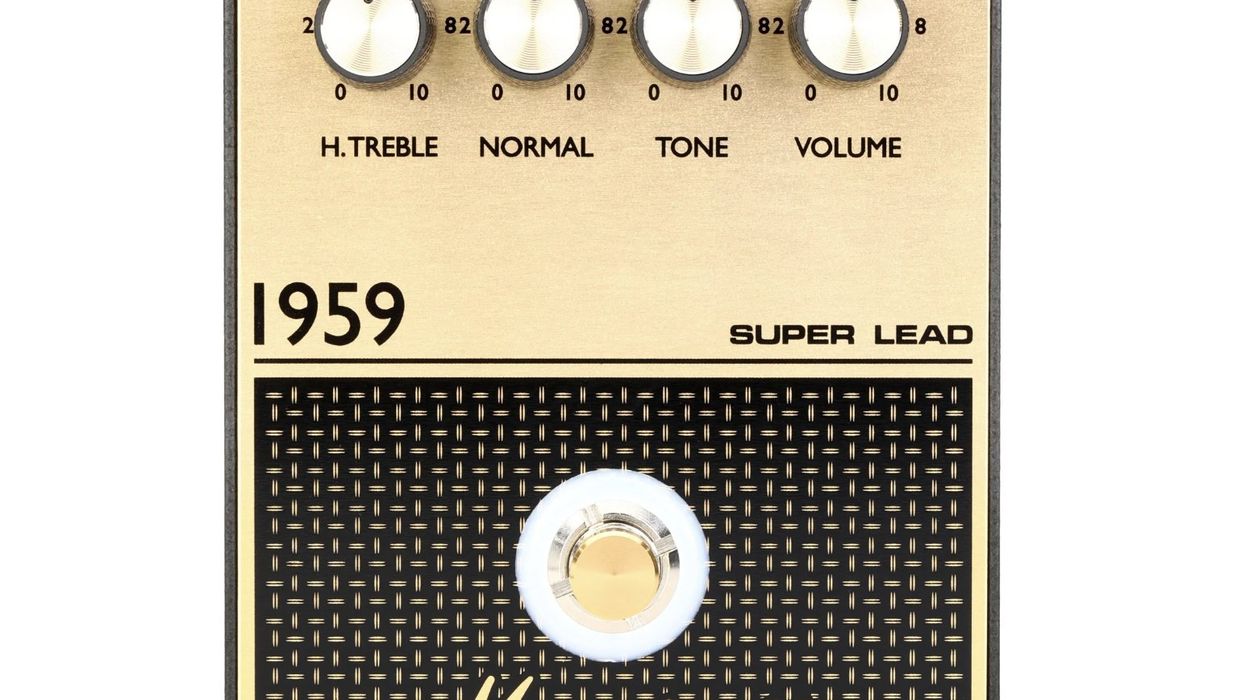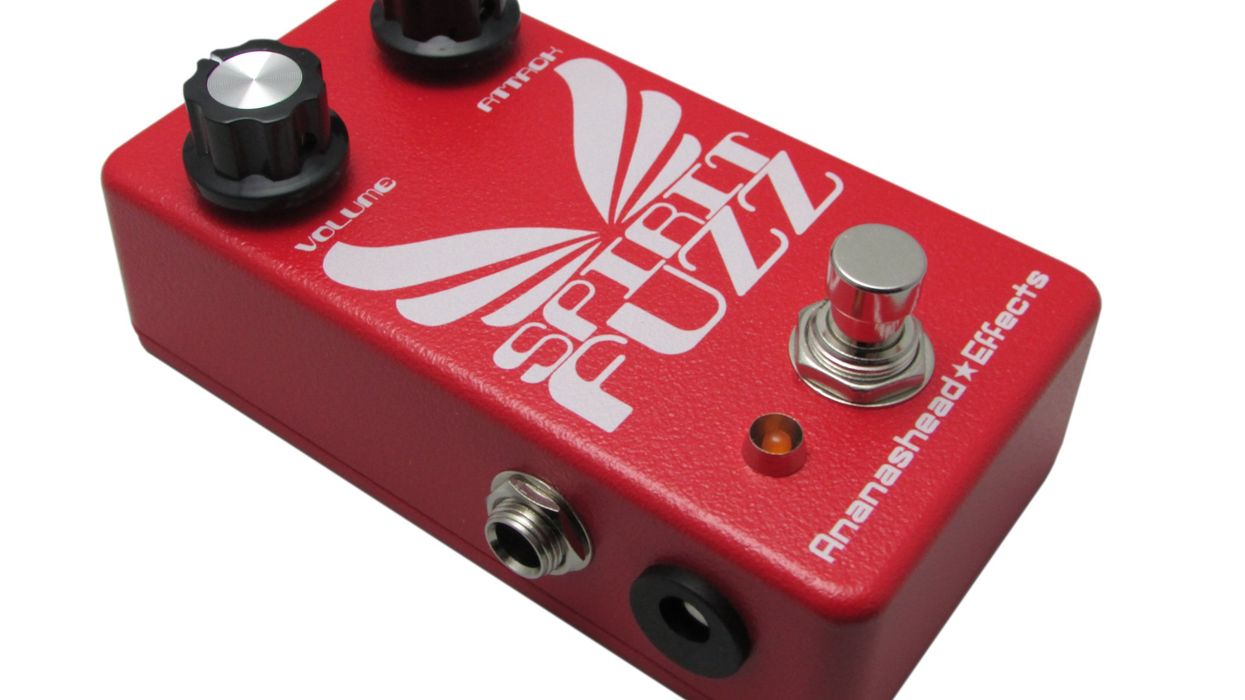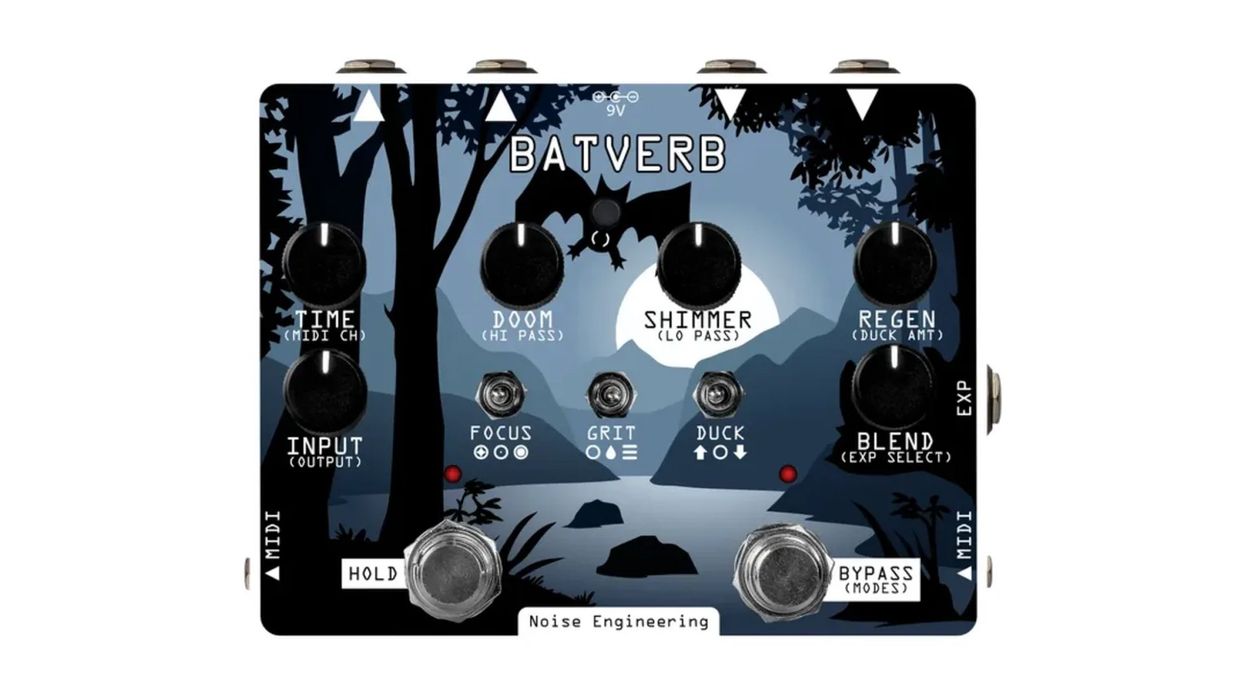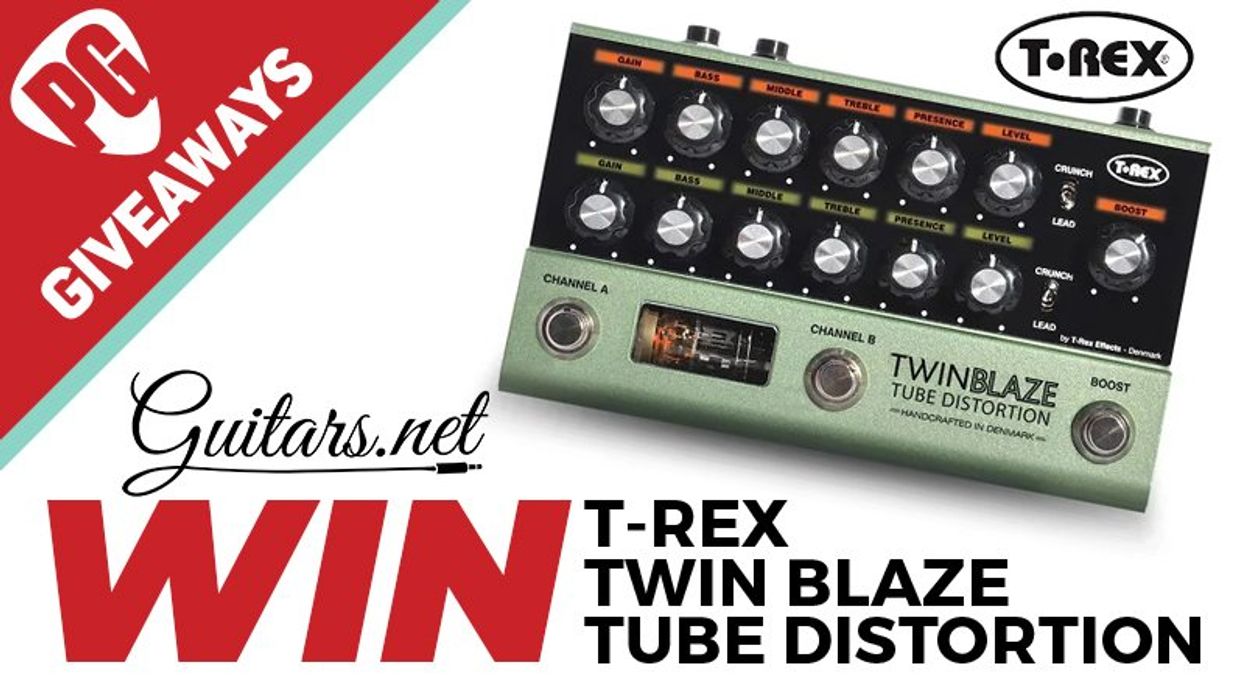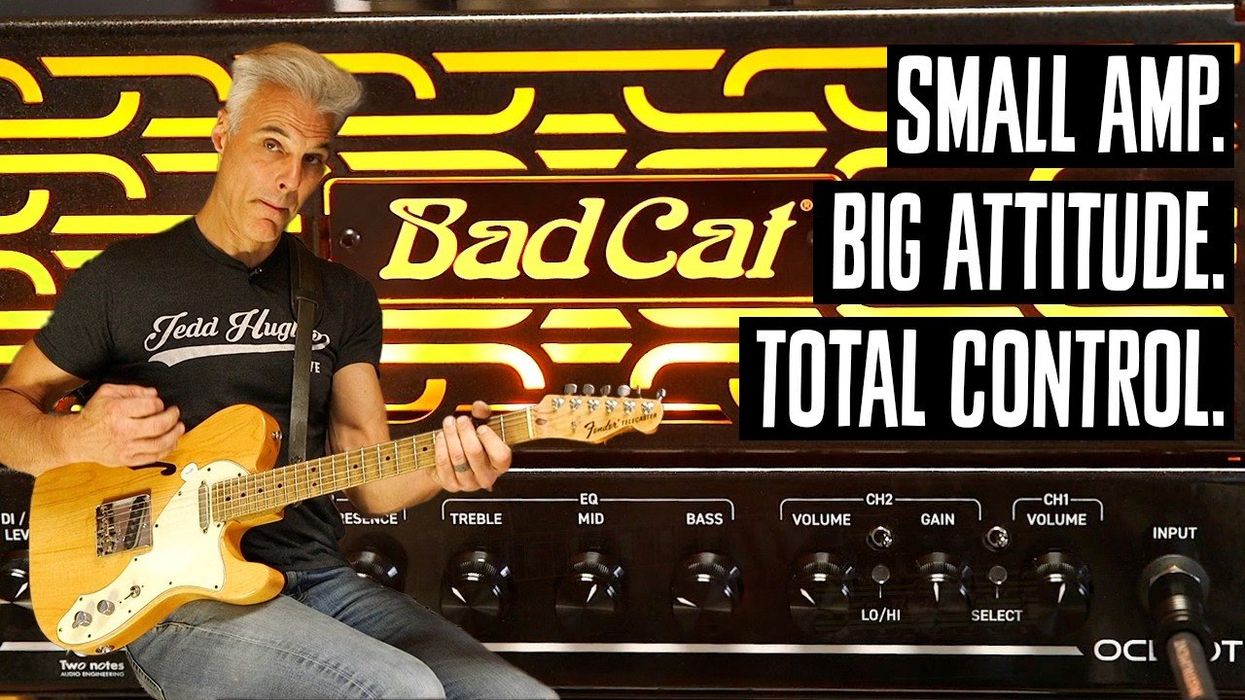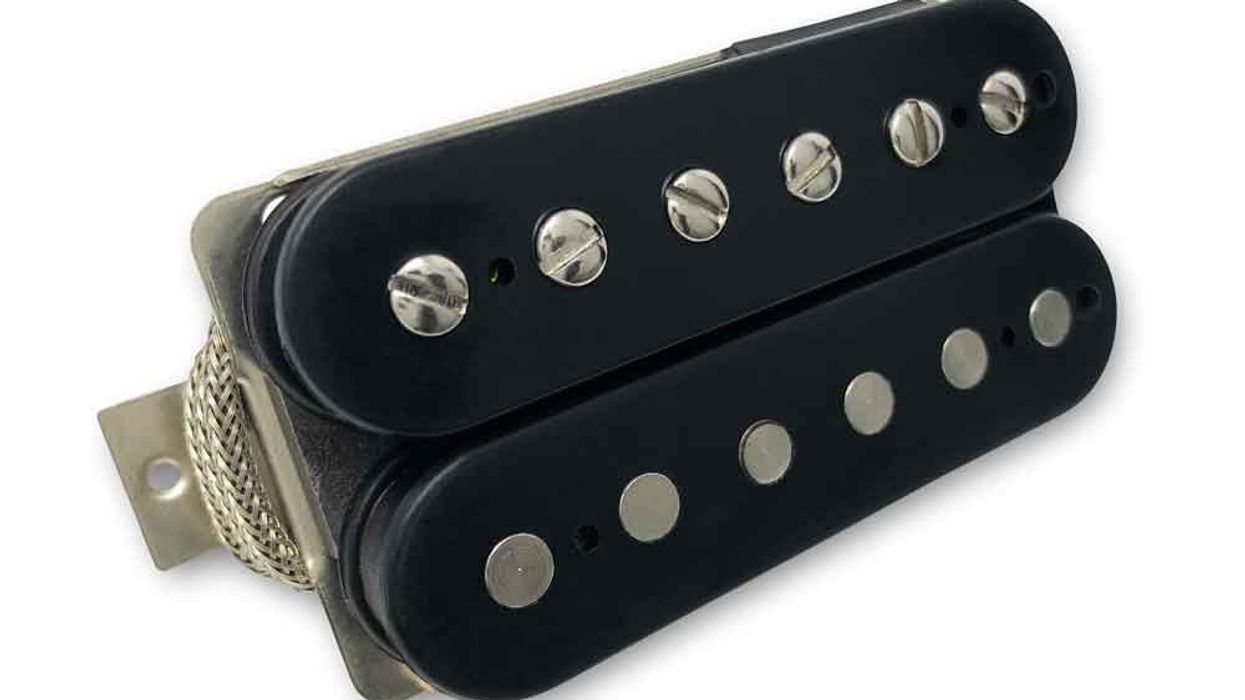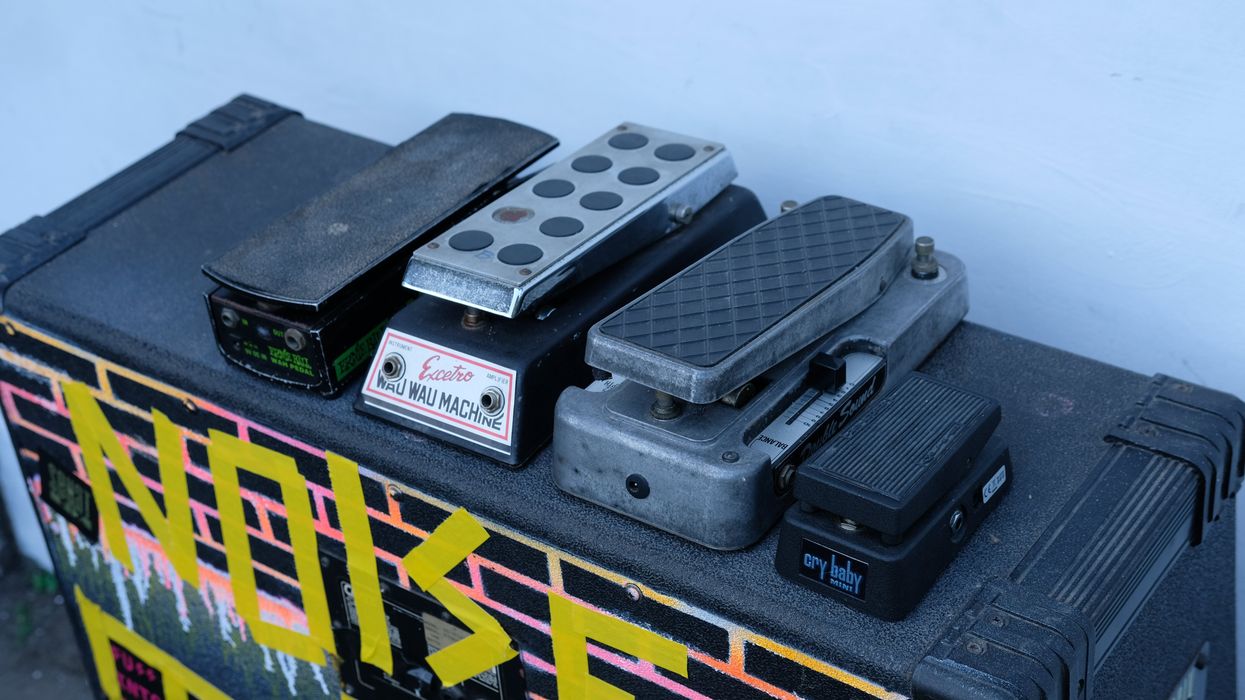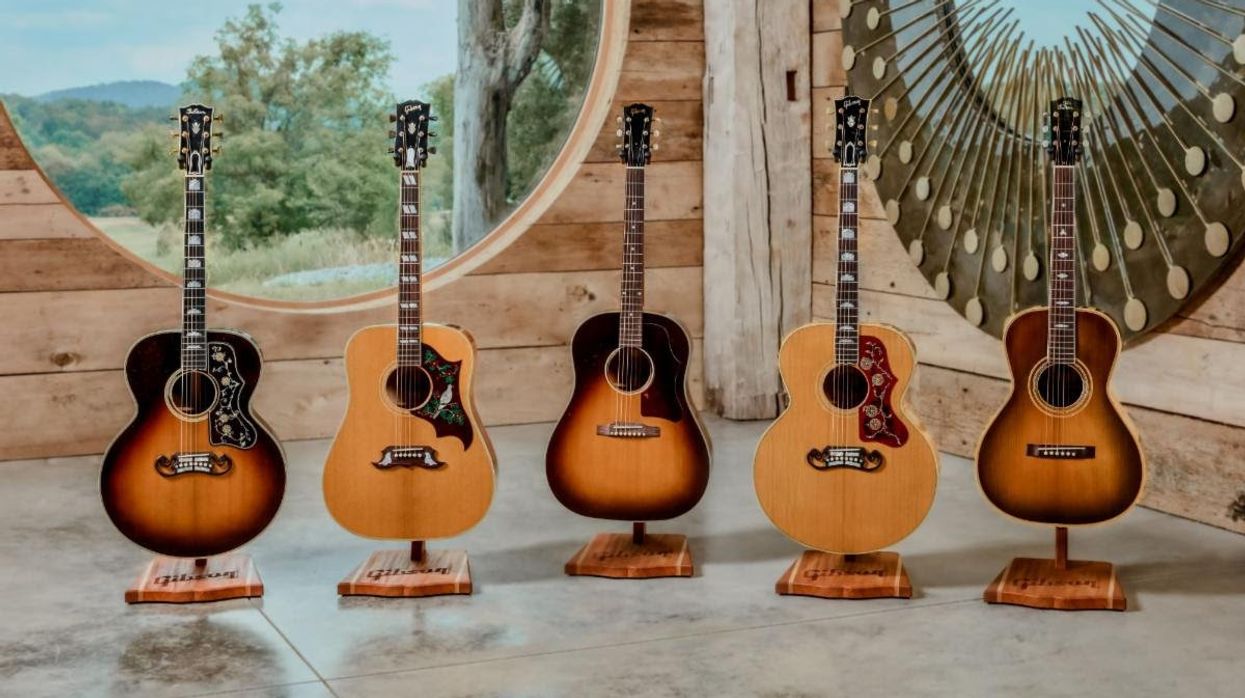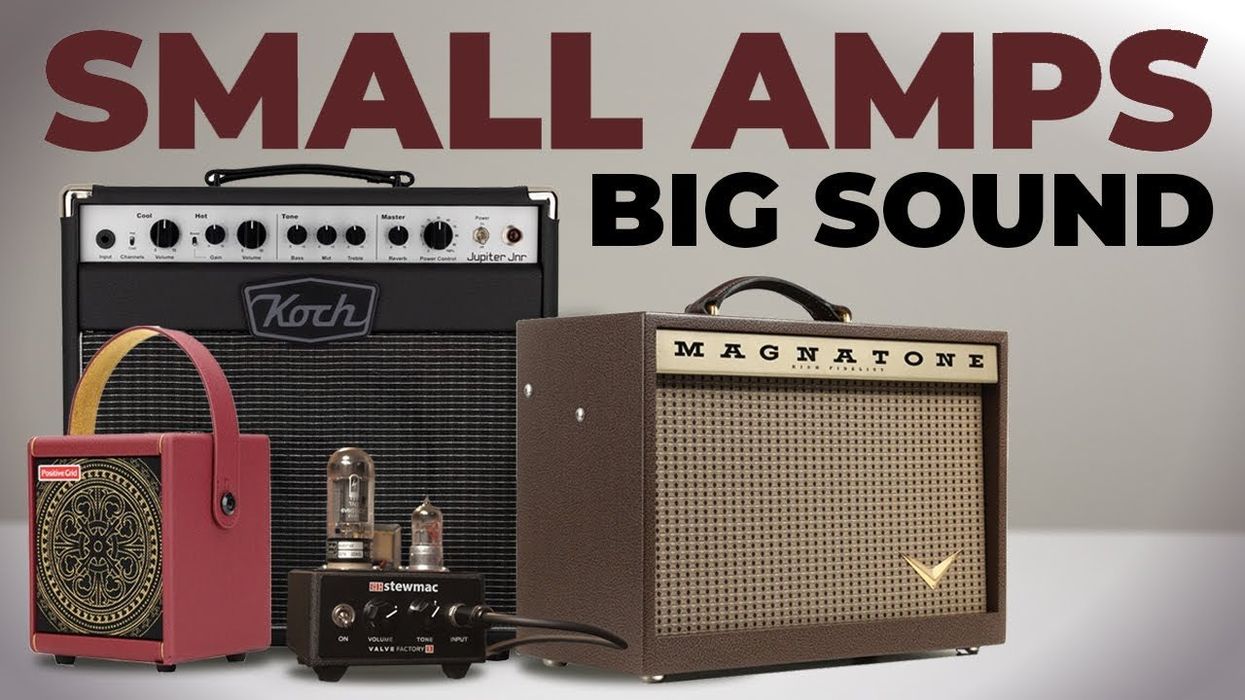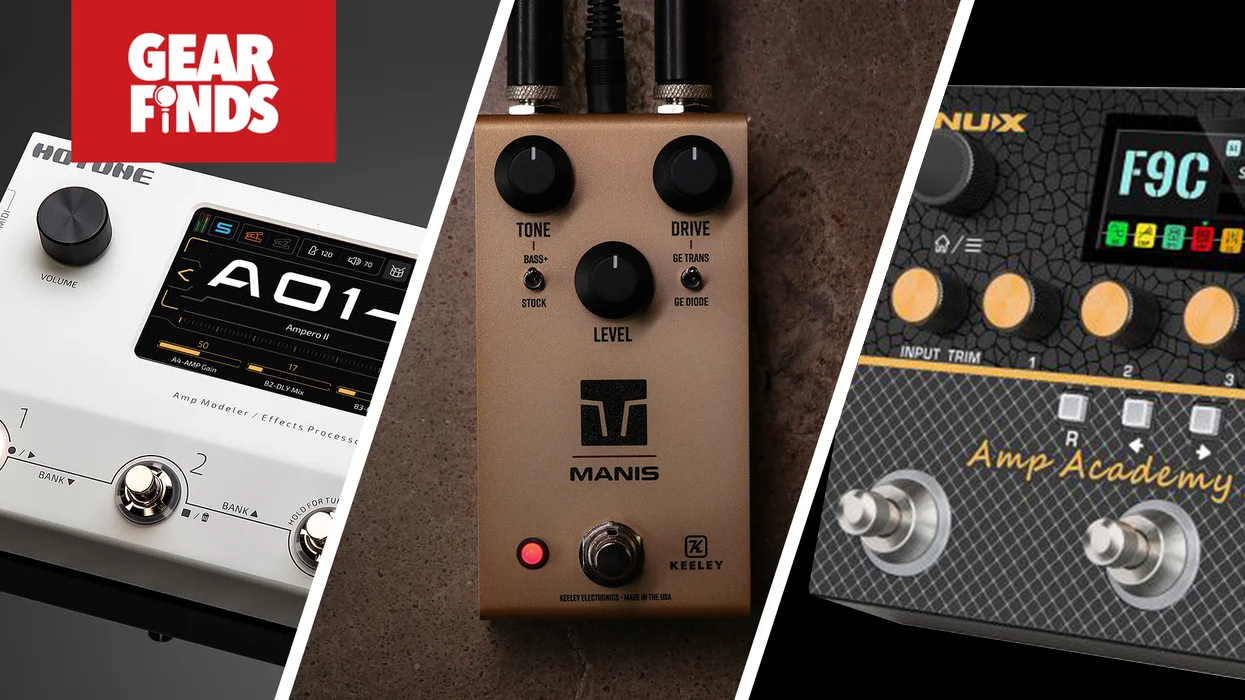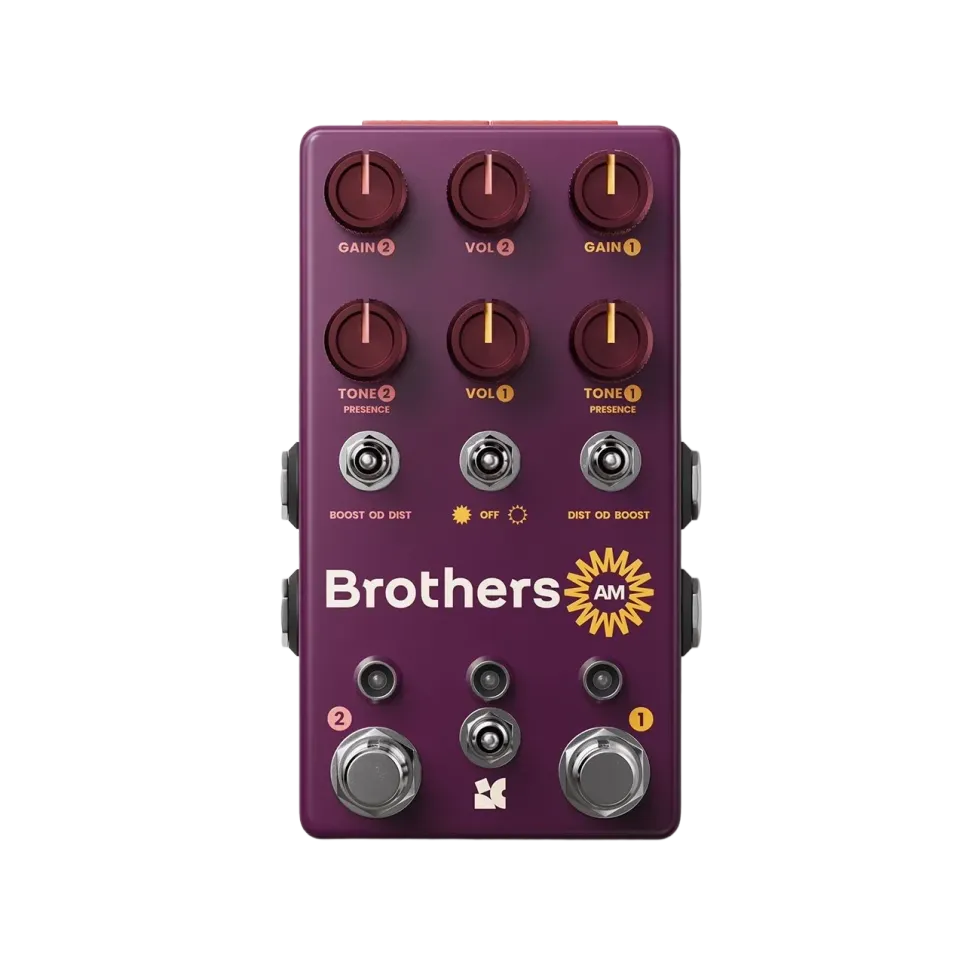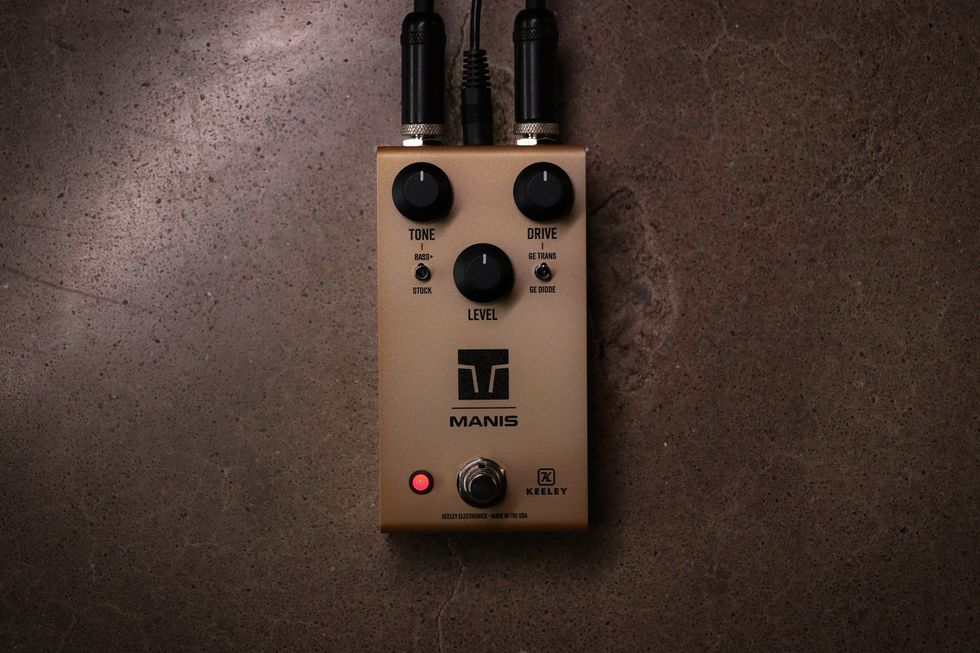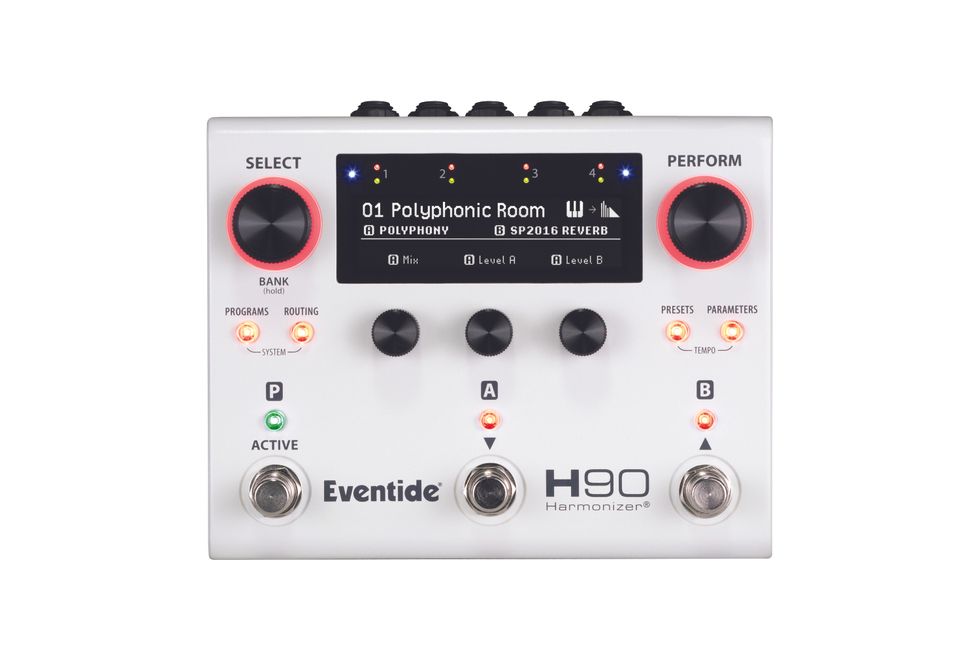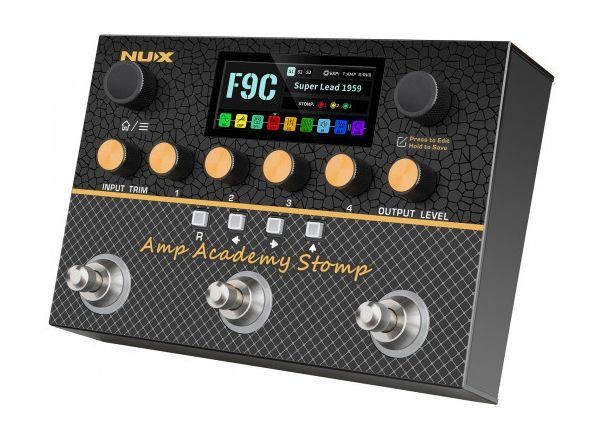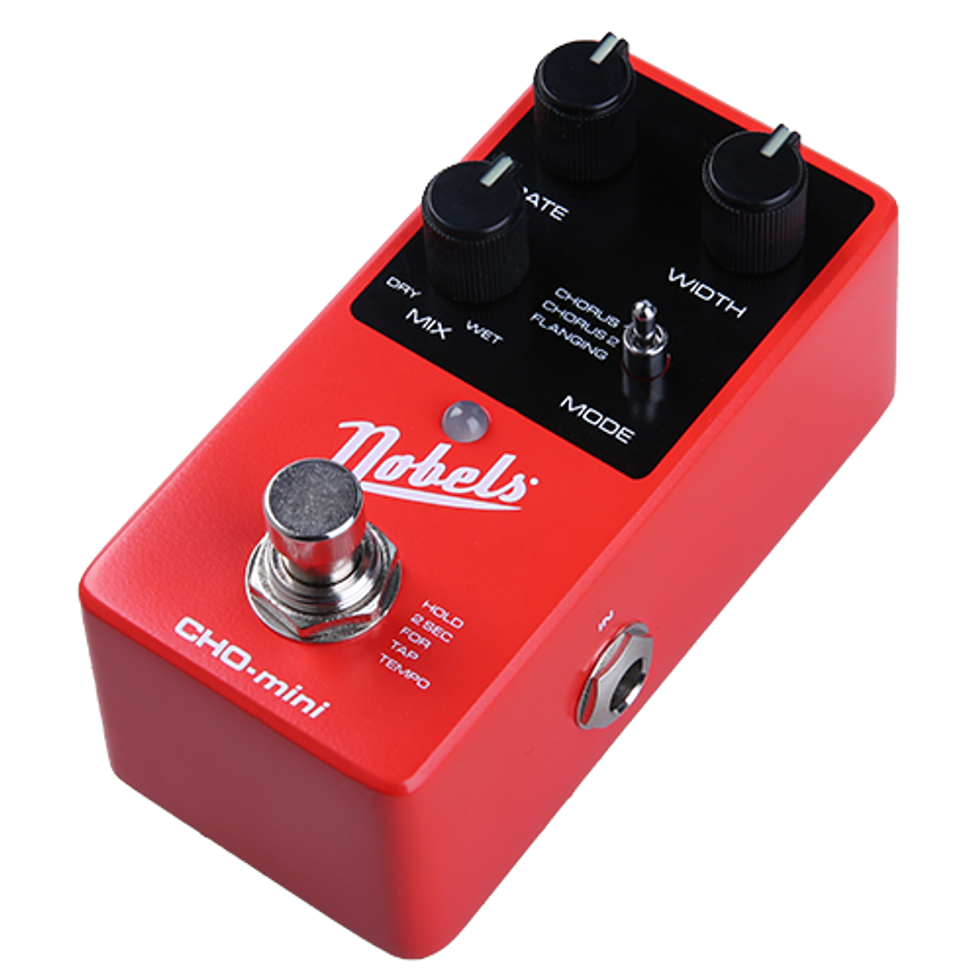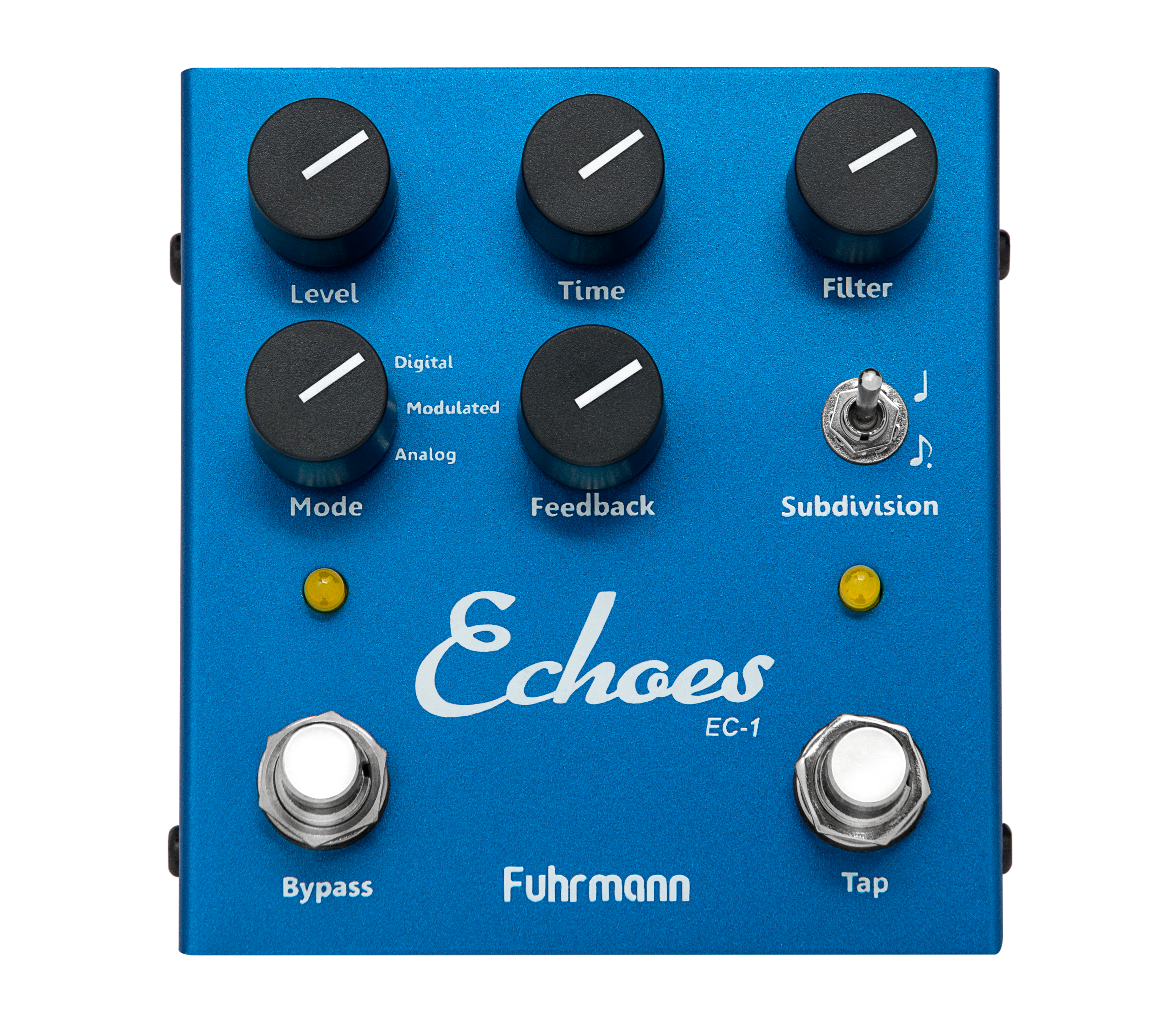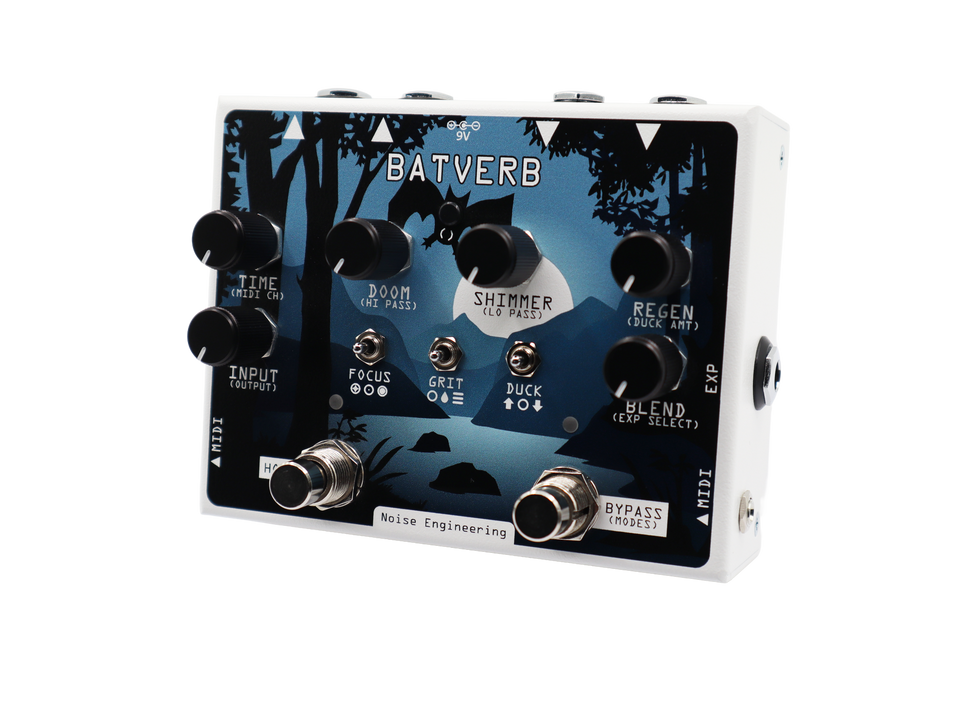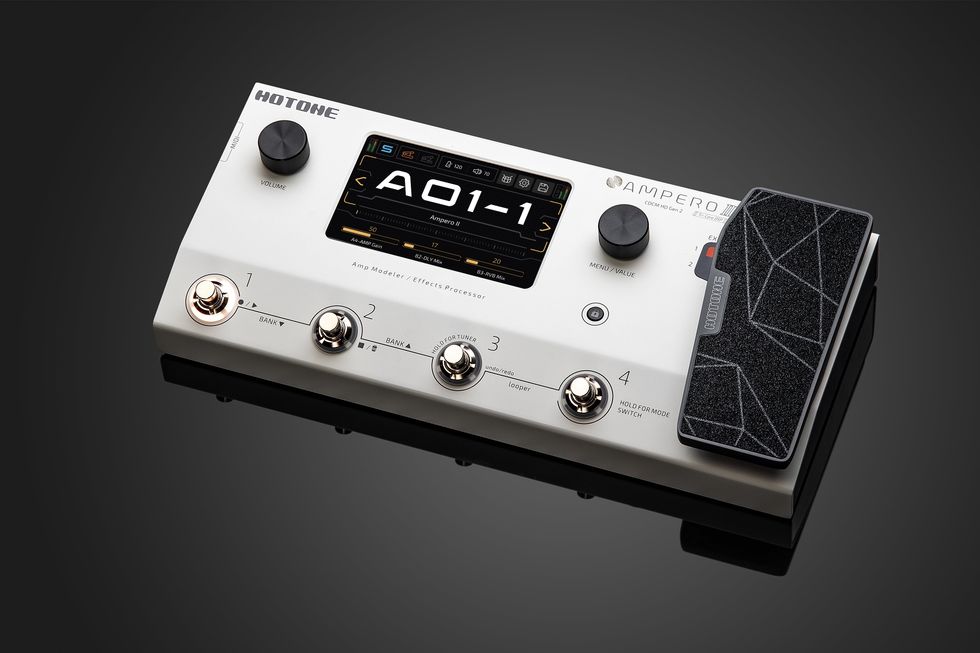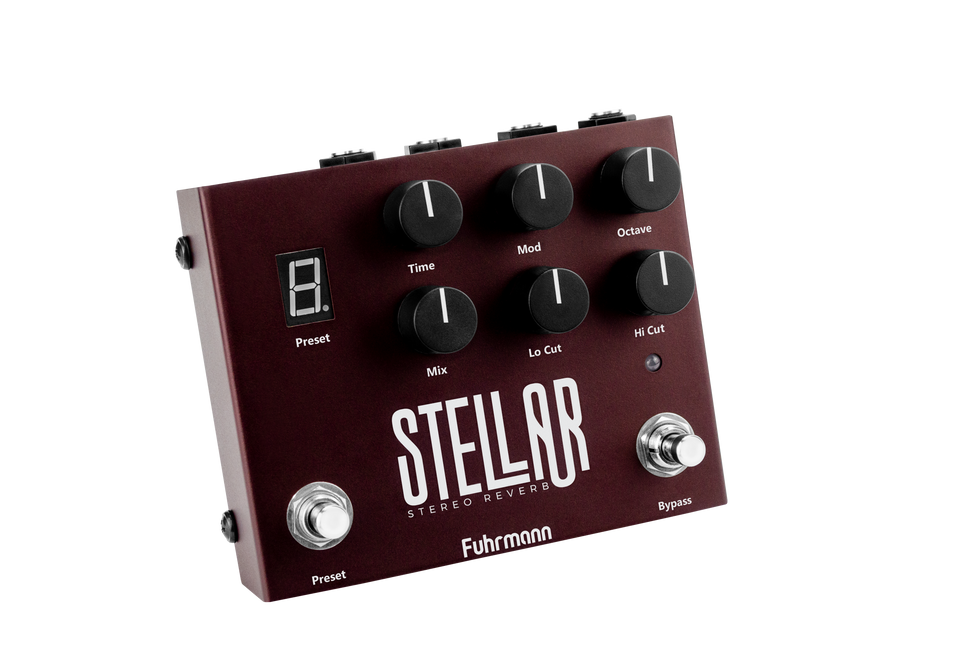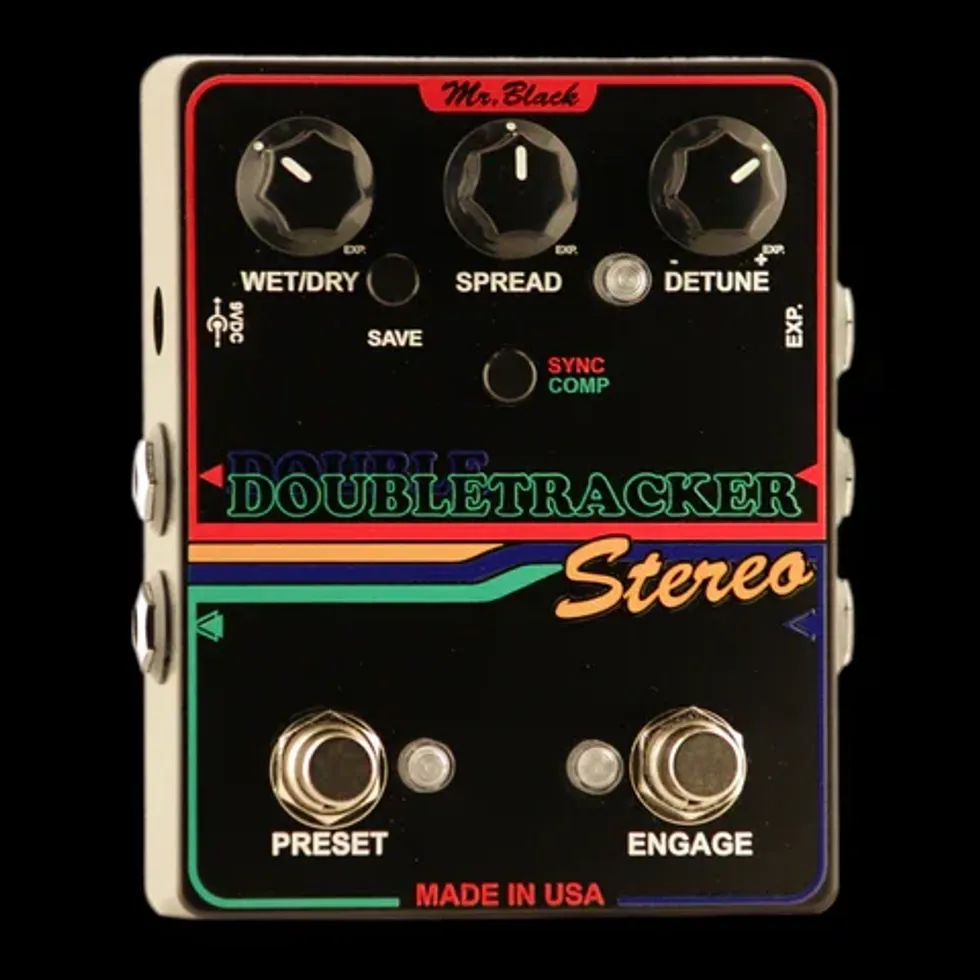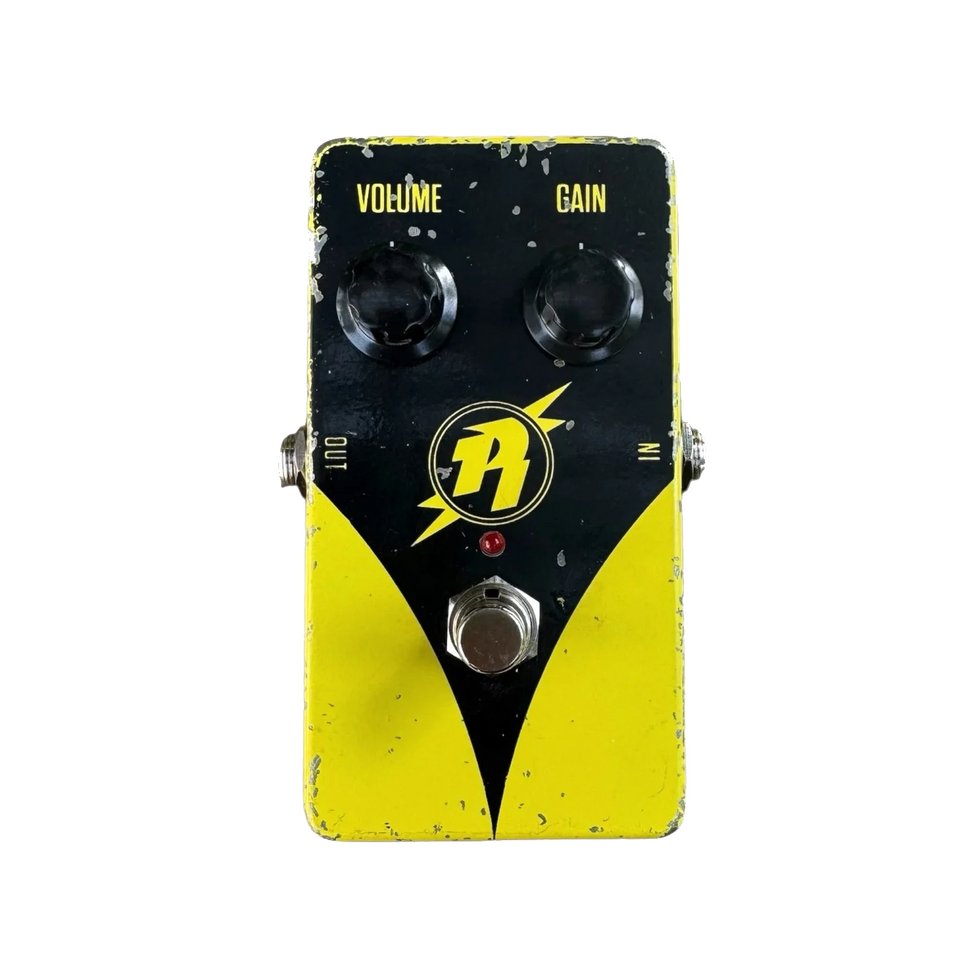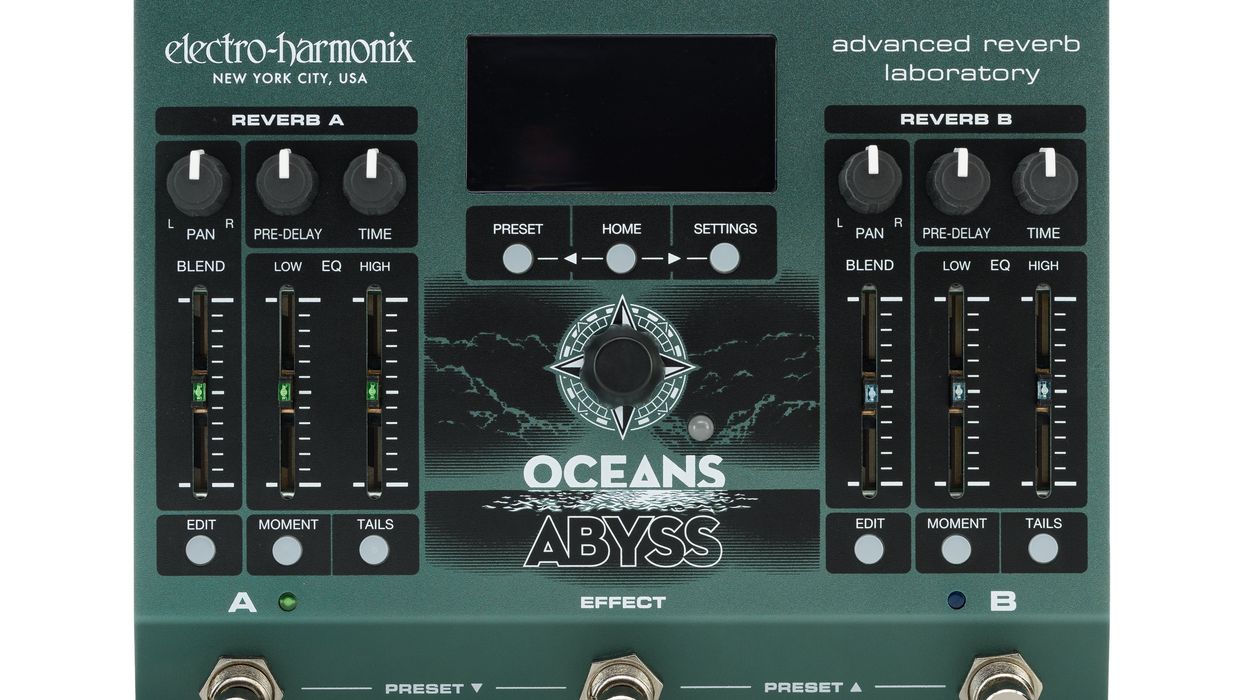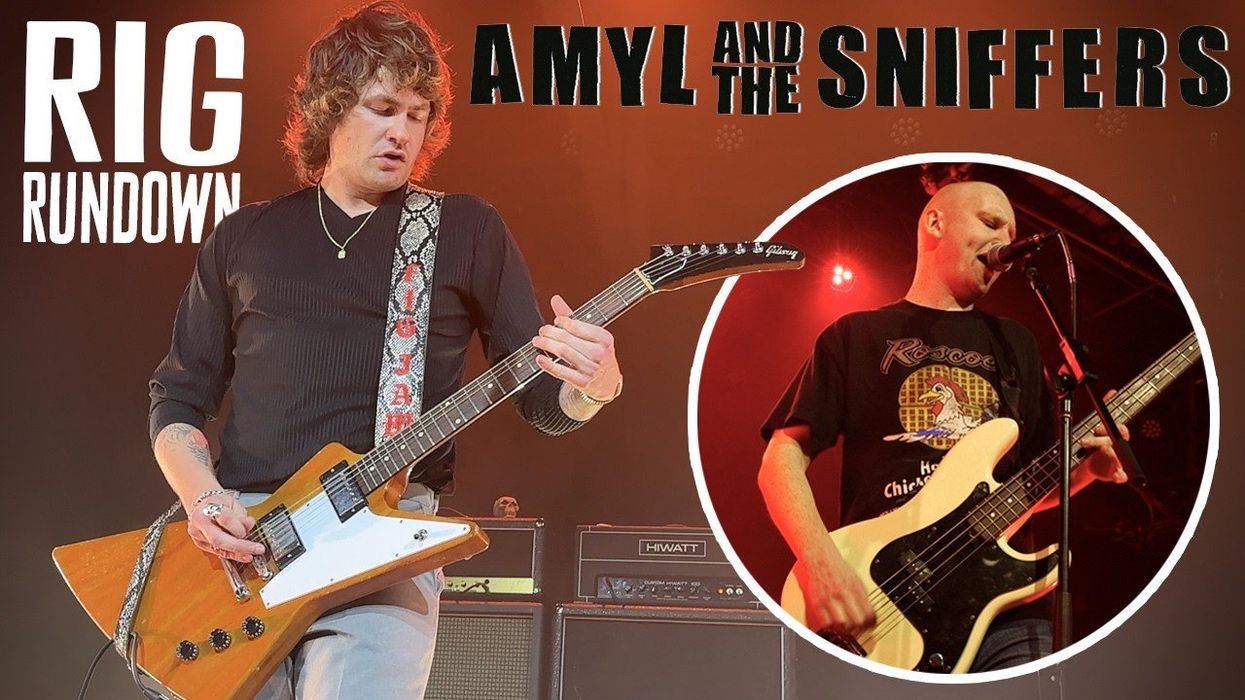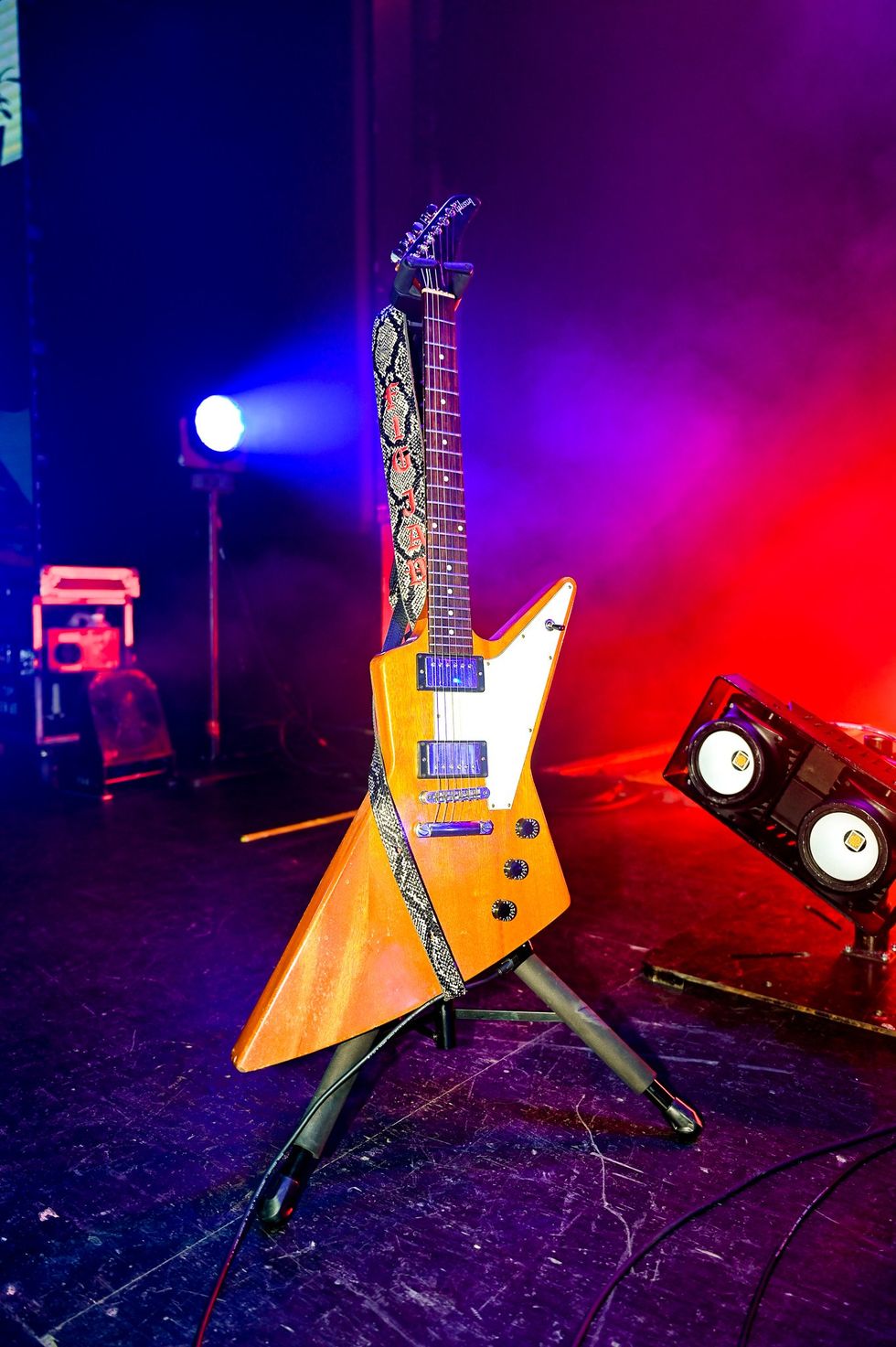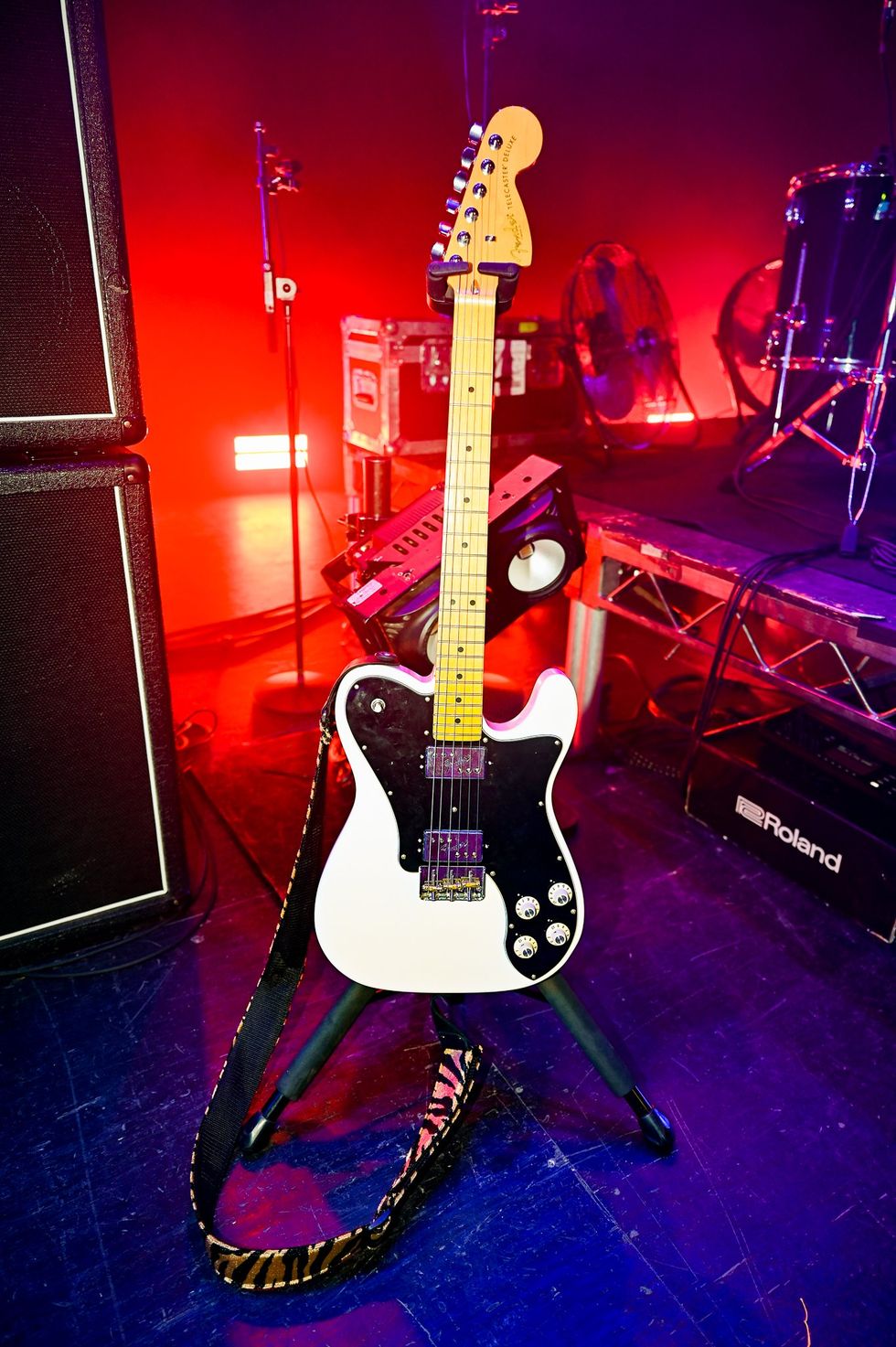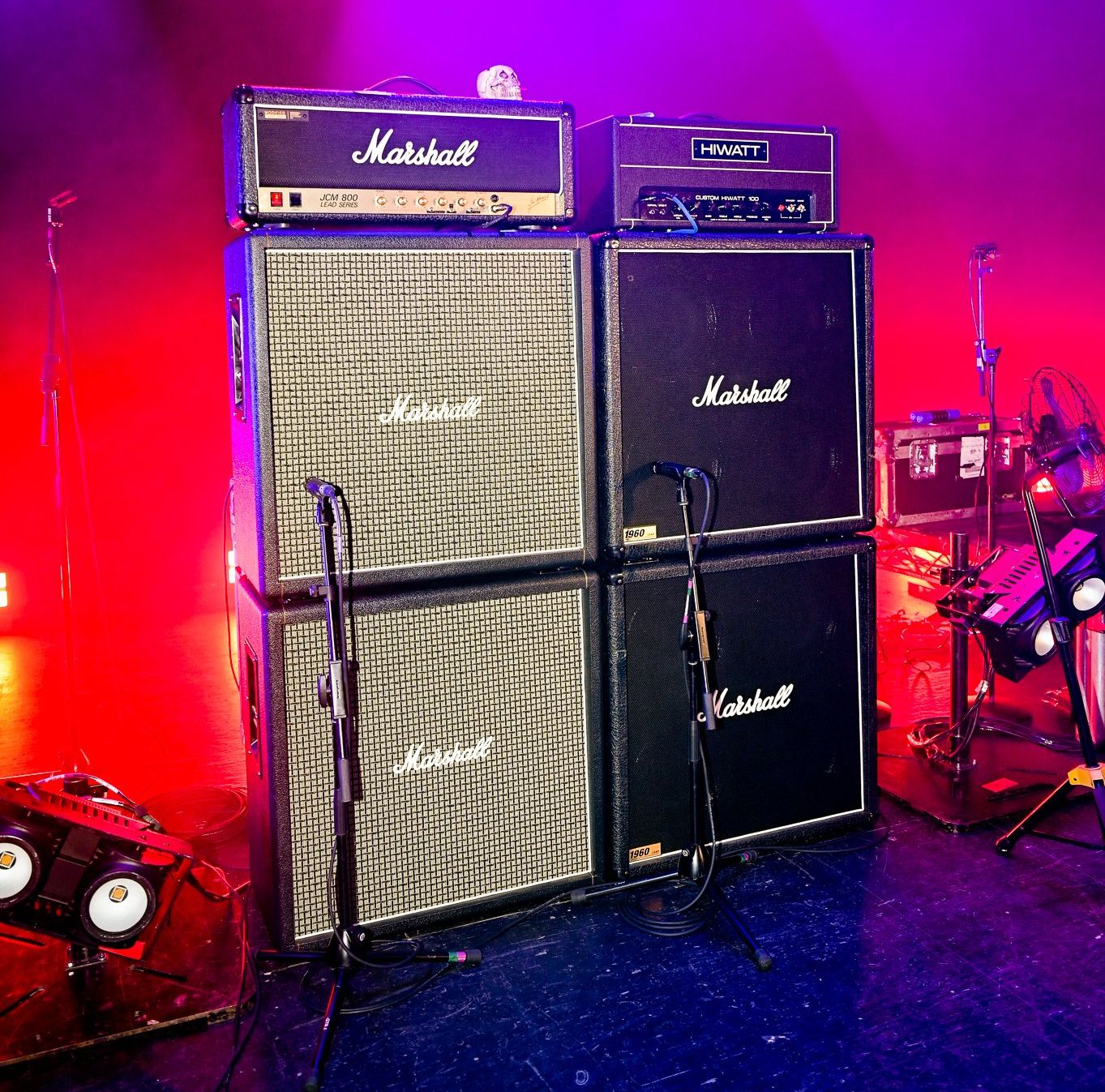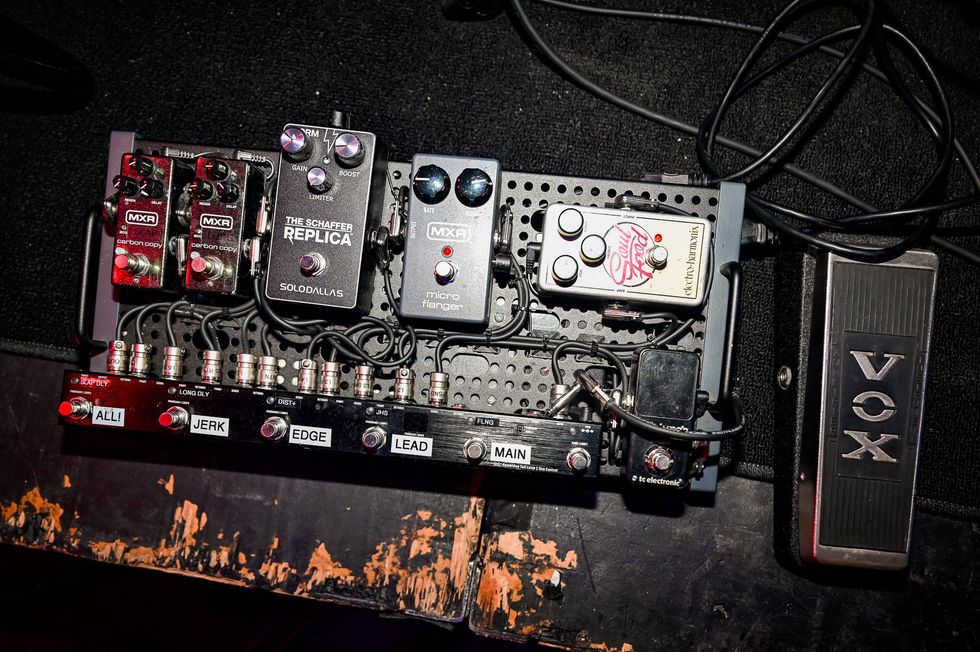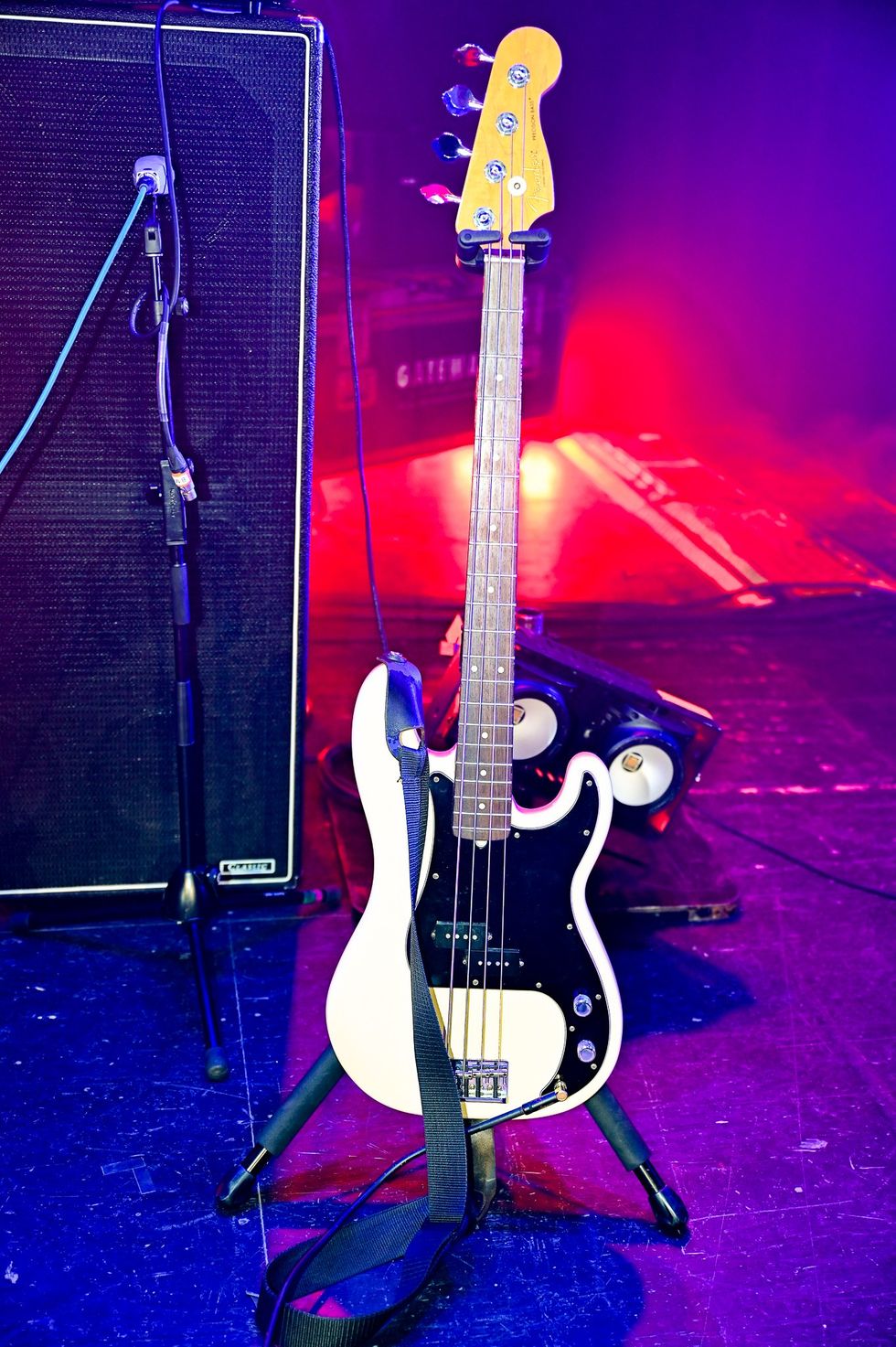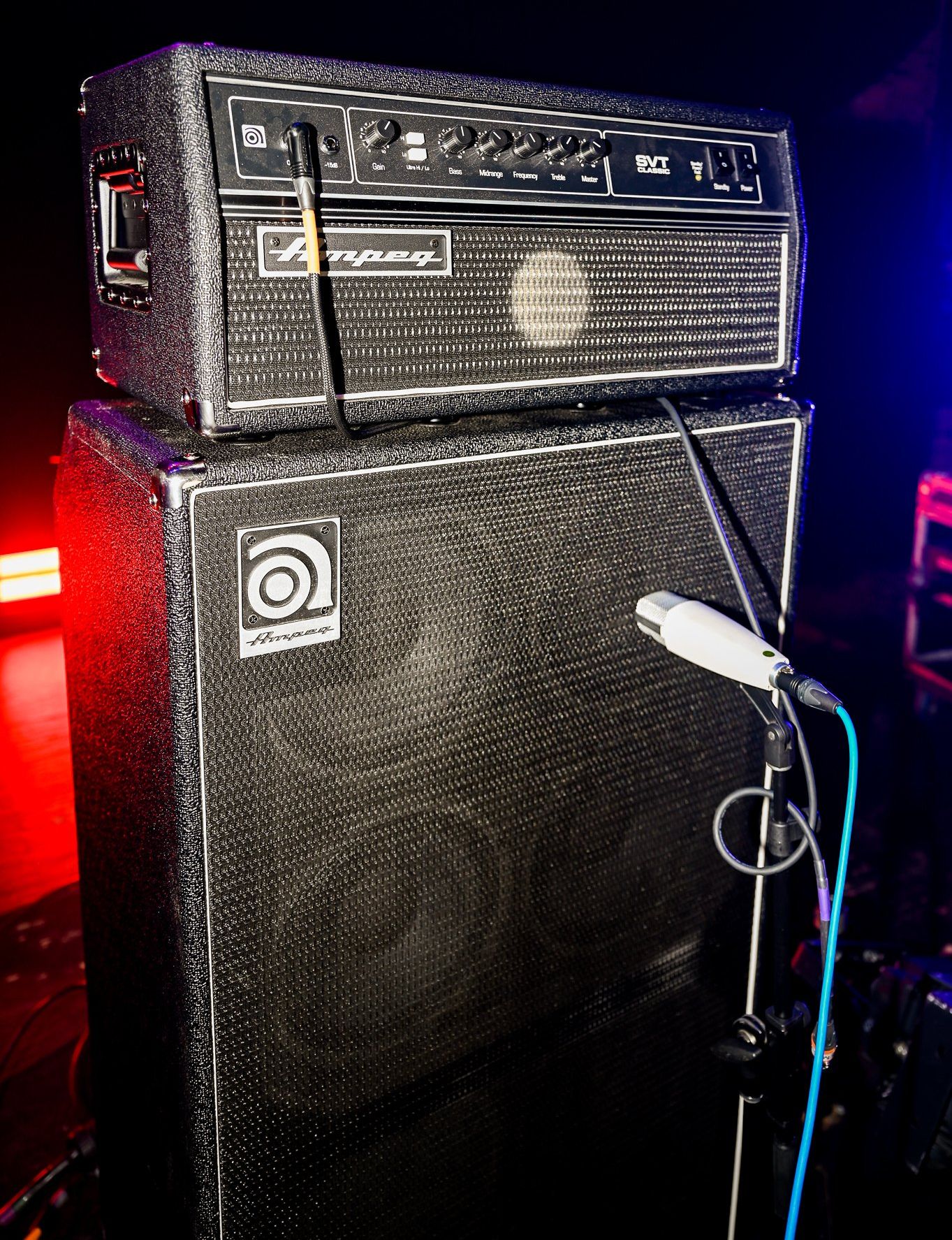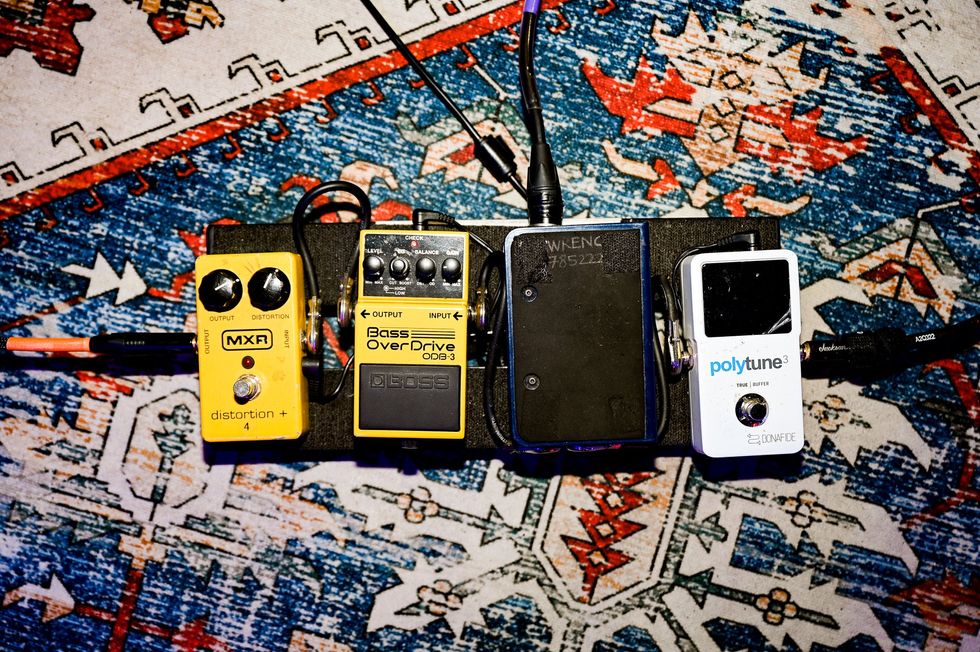My fascination with amps started before I was even a player. I remember hearing an accordion played through a Leslie speaker at a local park function as a preteen. The timbre—the lush physical cry of the horn and the full, resonant bass—marked the advent of my obsession with sound.
When I eventually started playing myself, I realized that the Leslie had been an immense part of that accordion’s glorious sound equation. I began collecting as many amps as possible, playing and performing with them often. Because many of them were used, maintenance soon became a real problem—which led to me getting my hands inside them and studying how they work. Repairs and inventions soon followed. I was hooked! Besides adding up to 20 years of great playing memories, my enthusiasm for all things amplified translated into a job for me, too. (I work as a designer and builder for EarthQuaker Devices in Akron, Ohio.)
With this article, I’d like to hip you to some fantastic amps that—so far—have flown under the radar. We all know the usual suspects that have left an indelible mark on the collective guitar psyche. The tones and aesthetics of these canonized stacks and combos are forever linked with the iconic images of legendary players and bands, and some have even made such a splash that they’ve crossed over to become household names with everyday music fans.
The creations I’m highlighting here are so formidable that it’s a wonder they remain a secret. They’re off-the-beaten-path designs that are ominous and arguably deserving of mythical status. But for whatever reason, not only have these amps maintained anonymity with the vast majority of the playing public, but they’ve pretty much been overlooked by the industry as a whole. Some are pawnshop prizes—that oft-skipped-over amp for sale next to the shiny, more easily recognizable and sonically safer brand. Some are classified-ad gems. One, sadly, never evolved beyond the prototype stage. And one got backburnered for years but is now making a comeback. But they all have one thing in common: Each is armed with authoritative sounds, tonal complexity, and burly features. I hope they inspire you to expand your horizons when looking for an amp—or, at the very least, renew your appreciation for your own favorite unsung amps with stories to tell and faces to fry!
Photo by Bruce S. Gates
Beamish Electronics Beamer (prototype)
Details and Specs
Manufacture date: Circa 1990Output: 25–30 watts
Power section: Two 6L6GCs
Bias: Cathode with tremolo
Preamp: Two 6SL7s (one for the preamp, one running in parallel for the tremolo)
Phase inverter: One 6SL7
Rectifier: 5U4
Controls: Master volume, gain, treble, middle, bass, headroom, reverb, compressor threshold and attack, effects-loop send, hi/med/lo preamp-gain voicing switch
Played through: Mesa/Boogie closed-back 2x12 with Celestion Vintage 30s
Built by Dane Beamish from Beamish Electronics in Cleveland, the Beamer started life as a Fender Twin Reverb—or at least the power and output transformers check out to be Fender (the choke is a Partridge). The cabinet appears to be from a Sound City head, and the chassis may be as well, but that’s where the similarities to either brand stop. The preamp is where the most important differences lie: It uses a cathode-follower approach to drive not only the tone stack, but also the built-in compression circuit—which has its own effects loop for inserting additional pedals (like an overdrive) that can alter the attack envelope and fine-tune how aggressively it clamps down on your signal. This makes it possible to have complete touch sensitivity at any volume or gain level. The preamp also employs a traditional, long-tail-pair-style phase inverter—the type that’s been used in most Fenders and Marshalls since the mid 1960s because it offers the cleanest, most balanced way to deliver a signal to a power section.
Of course, this seeming hodgepodge of building approaches would mean nothing if the Beamer didn’t sound fantastic. With its vast gain-selecting options (via a three-position preamp-gain toggle), a solid-state effects loop (separate from the compression circuit’s), master volume, reverb, and headroom knob—a variable negative-feedback control that changes the percussive quality of the amp’s response—the Beamer can cover everything from jazz to blues and hard rock. Adding a gain pedal out front yields even heavier vibes—or you can just crank up the master volume and let the power section do the talking. And Beamer doesn’t just take pedals extremely well, it adds life to everything plugged into it. There’s string-to-string clarity and fullness in spades, as well as a sonic physicality beyond any other amp I’ve owned.
As for the reverb, although it’s a tube-driven blackface Fender spring tank, it envelops your sound in a gooey, space-filling ambience that sounds a lot like a deep plate reverb. The difference seems to come from using a 12AX7 driver, which is higher gain than the typical 12AT7. In the Beamer, the 12AX7 really brings the dwell to the front—and with zero added noise.
What’s really stunning about the Beamer, though, is how it lets you tweak the input-gain range and master volume separately. You can plug into low, medium, or high-gain inputs, and then you can select low, medium, or high sensitivity for that input. This allows you to get everything from small, Champ-like tones to high-headroom Fender sounds, or even Marshall tones via the high-gain input and high-sensitivity setting. The 3-band EQ goes from dark jazz tones to mosquito bright, without any harsh or unusable settings. Pair that with the headroom control, and you’ve got a sound that can be really soft and supple or upfront and bold.
Beamish made very few of these amps, and each one seems to have varied a bit. Some were EL34-driven 100-watters. Some used 6L6s, like mine. There’s legend of a 50-watt model, too. Of the people I know who have them, many are on the road and used almost daily. I believe in 1990 they sold for around $1,500, though the prices were really only disclosed to the lucky few who commissioned them.
Photo by Bruce S. Gates
Ampeg M15
Details and Specs
Manufacture date: Circa early 1960sOutput: 100 watts
Power section: Four 6L6s
Bias: Fixed
Preamp: Four 12AX7s
Phase inverter: One 12AX7
Rectifier: Solid-state
Controls: Volume and tone for each of the two 1/4" inputs, tremolo intensity, tremolo speed, tremolo on/off footswitch
Played through: 15" Jensen P15N
Although a lot of guitarists think of thundering bass amps when someone mentions Ampeg, the company’s guitar amps of yore—including the Jet and Reverberocket—are revered by a much smaller but still sizable contingent of 6-stringers. I find Ampegs to be some of the best combos out there in terms of how they break up when you push them with humbuckers or your favorite gain pedal. I especially like the M15 because of its octal 6SL7-based preamp. Similar to 9-pin 5751s, 6SL7s have a sound that’s somewhere between the typical 12AX7 used in most modern-day amps and the lower-gain 12AT7s used in vintage amps such as early Fender combos. I’ve built a lot of amps with 6SL7s in the front end because I enjoy their full sound, and the Ampeg’s 15" ceramic Jensen speaker really complements this.
While the M15 seems pretty normal at first glance, it’s got some unique things going on in terms of circuitry. Plug in, and your guitar signal journeys into the preamp, where it is driven hard to compensate for the loss of tone and volume that you often get with old passive EQs. From there it goes to the paraphrase-style inverter (another 6SL7), and on to the cathode-biased 6L6s. A paraphase inverter is an older design that was basically a common way to get an out-of-phase version of the input signal, equal in amplitude, to feed the power-tube inputs.
It isn’t the most balanced way to do this, which is why it yields unique clipping characteristics when pushed. Some describe this type of circuit’s overdrive characteristics as grainy, with a vibrant, almost “alive” feel.
But granular gain isn’t all that makes the M15 so cool. Cranked, it’s gutsy rock ’n’ roll. But run it clean, and it’s a dream. The tremolo is wonderfully lush and harmonically rich. With pedals out front, it really thumps and blooms with sustain. And perhaps best of all, although the M15’s power output may not seem that high, a good specimen should be able to hang in most medium to loud volume situations. When looking for one of these fun amps on the used market, expect to pay between $600 and $900.
Photo by Bruce S. Gates
Aims VTG 105
Details and Specs
Manufacture date: Circa 1974Output: 100 watts
Power section: Two 6550s
Bias: Fixed
Preamp: Four 12AX7s
Phase inverter: One 12AT7
Rectifier: Solid-state
Controls: Volume, treble, middle, and bass knobs for both channels, bright in/out slider (one on each channel), reverb knob (channel 2), reverb in/out slider (channel 1), tremolo speed and intensity knobs (channel 2), master volume
Played through: Four 10" ceramic-magnet models
It’s very difficult to find information on Aims Amplifiers, but I believe the now-defunct Phoenix, Arizona, company was started by former Fender employees sometime in the 1970s. As you might expect, the VTG 105’s design is similar to other Fender combos of the era. The preamp has a 12AT7 long-tail-pair phase inverter that delivers accurate signal balance and gain to the power tubes, and there’s also an optical tremolo circuit and tube-driven reverb. But there’s one major difference between the Aims and most Fenders you’ll encounter—this 4x10 combo uses 6550 power tubes in a push-pull (class-AB) output section. This single change alone means the VTG yields lots of proud volume and crushing low end. And the solid-state rectifier and heavy filtering in the power section ensure the sound is tight and focused, with a very immediate feel in terms of responsiveness.
Given the VTG’s pedigree, features, and 4x10 configuration, it’s only natural to wonder how it compares to a Fender Super Reverb. But the fixed-bias 6550s keep it clean at much higher volumes than a Super and give it a gain structure more akin to a Twin Reverb’s. In fact, any breakup that’s apparent with this amp seems to stem from the speakers and closed-back cabinet design. Further, although the EQ sections are passive, they have a surprisingly active sound. The bass knob offers deep, deep lows, the treble can go really chimey, and the middle control seems to dynamically affect how the other two EQ controls respond.
And while, circuit-wise, the amp’s sine-wave tremolo and spring reverb are similar in almost every way to what you’d find in a Fender from the same period, the reverb pan is mounted rather intriguingly: The tank is uncovered and the springs are visible, but the pan itself has been rigged with small springs at the points where it attaches to the chassis. This is to prevent mechanical vibrations from, say, a bumped cabinet from transferring to the reverb springs themselves. It’s not exactly the prettiest implementation—the tank is basically held in place by bent screws—but the sonic results are nevertheless outstanding. The reverb is lush and warm, and more than capable of defining a small space or instilling surf-y saturation, and the unorthodox “shock-mount” system effectively stifles jarring distractions.
The VTG 105 and other Aims amps are pretty tricky to track down, but despite this rareness they tend to fetch pretty low prices— usually somewhere in the $600 to $800 range.
Photo by Bruce S. Gates
Ampeg V4
Details and Specs
Manufacture date: Circa 1975Output: 100 watts
Power section: Four 7027s
Bias: Fixed
Preamp: Two 12AX7s, one 6K11, one 12DW7, and one 6CG7 reverb driver
Phase inverter: One 12AU7
Rectifier: Solid-state
Controls: Volume knob and 3-position input-sensitivity switches for each of the two 1/4" inputs, treble, midrange, bass, reverb, ultra-hi switch, midrange-selection switch, cab-impedance slider (2, 4, or 8 ohms), reverb-spring retainer for minimizing rattle during transport, hum-balance trim pot for curtailing tubes’ AC-filament noise
Played through: ’70s vertical Kustom 2x15 cab with Eminence Delta speakers
Despite its striking resemblance to vintage Ampeg SVT and current-production V-4B reissue bass heads, the original V4 was actually intended for guitar. When I first serviced this venerable amp, I realized it’s anything but typical. It offers a lot of unusual ways to tweak operation, and as I reviewed the schematic during subsequent repairs I became more and more intrigued.
How’s the V4 different? For starters, it has an extremely unique tube complement in both the preamp and the power stage. Two 12AX7s drive the front end, which has a passive James tone stack—an interesting circuit with a pair of filters that have an almost notching effect at lower settings, but that instill a bit of character when set flat, and offer a surprising boost when cranked. It’s a subtractive filter, meaning that it takes away some guitar signal when used, but its tweakability is worth the tradeoff. There are also two switches that set either input’s sensitivity at 0 dB or pads them at -9 or -6 dBs. A 6K11 tube—a nifty bottle containing two 12AX7 sections and one lower-gain triode section (that’s right, three triodes in one valve!)—boosts and changes the input-signal impedance (via the cathode follower) in order to better drive the inductor-based midrange-selection switch, which sets the midrange knob’s midpoint at 300, 1,000, or 3,000 Hz. Each of the switch’s settings effectively reinvents the way the bass and treble controls react.
But wait, there’s more! A 12DW7 valve (which is similar to a 12AU7) drives the preamp-out and power-amp-in connections—two flexible options that, even today, are pretty specialized and forward thinking. Meanwhile, the 12DW7’s second triode stage is used as a paraphase inverter, and a 6CG7 drives the reverb tank. The V4 also uses a solid-state rectifier and offers separate taps for screen voltages on the power transformer.
As with the Beamish, the unusual circuit would mean nothing if the V4’s full-bodied tone didn’t utterly dominate. If you want to brutalize your audience with thunderous lows, this amp has you covered—especially through something like an old Kustom 2x15 speaker cabinet. The 7027-driven power section stays pretty clean throughout the travel of the volume controls, although higher settings do elicit a pleasing distortion with glassy top end but no hint of harshness. Even aggressive tones remain smooth and creamy. The input-sensitivity options are fantastic for making sure you get the amp’s best tones from guitars with varying output levels—but they’re also great for getting the drive characteristics you prefer at different amp volumes. The tone controls offer incredible flexibility, and at higher settings they can have a big impact on the amount of drive available.
Though V4s have gained some momentum in the used market recently, you can still find them for around $450 to $600—which is truly a steal!
Photo by Bruce S. Gates
Soul Shaker Amplification Mama Soul Shaker 30
Details and Specs
Manufacture date: CurrentOutput: 30 watts
Power section: Two EL34s
Bias: Cathode
Preamp: One 6SN7 for EQ, and one 6SL7 for the trem
Phase inverter: One 6SL7
Rectifier: GZ34
Controls: Volume, treble, tremolo speed and intensity, variable line out, tremolo footswitch, impedance selector for parallel speaker outputs
Played through: Mesa/Boogie closed-back 2x12 with Celestion Vintage 30s
Soul Shaker Amplification’s Jestin Puett makes amps that are responsive, lively, and steeped in classic circuit design. He borrows from topologies of yore, but he’s meticulous about selecting quality parts, and his amps boast boutique-quality builds and functionality. Tonally, the Mama Soul Shaker 30—which debuted a few years back but is now back in production—is similar to a Valco or tweed Fender, but it’s by no means a knock off. Its Brazilian cherry and curly-maple cabinet houses a point-to-point-wired circuit that uses high-end parts like Jupiter and Mundorf capacitors, as well as Takman 1-watt carbon-film resistors.
The Mama’s preamp is a two-stage, cascade design that uses a 6SN7 tube to provide extended bandwidth and lower impedance to the next stage. A single tone control is implemented later in the circuit to aid in voicing. This means you pretty much get straight tube tone into the 6SL7 phase inverter that feeds the EL34 power tubes sans negative feedback. (Mama can also be biased to work with most octal tubes, too. KT66s are my second favorite.) The 6SL7 that handles the tremolo is wired in parallel and wiggles the amp’s bias to achieve its swampy sound. There’s also an LED indicator for tremolo speed.
The Soul Shaker is harmonically rich and balanced, with a depth of harmonic detail found in few amps. You play and it just sings! Its gain structure sounds clean and clear, but when it clips, it does so in the sweetest way. Every nuance and finger motion is translated beautifully, and it sounded huge with every cabinet I tried it with. And even at low volume, the tremolo is incredibly sweet and physical sounding. As you turn up, Mama compresses in a very musical way, with no flub or brash high end. And despite its lone tone control, it never feels lacking in terms of expressive EQ. You don’t need a bunch of knobs when it sounds right at every setting.
Availability? The Mama Soul Shaker isn’t rare in terms of being discontinued, but it is currently only available by custom order. Soul Shaker amps are priced in the $1,500 to $2,000 range and are well worth the money.
Photo by Bruce S. Gates
Traynor YSR-1 Custom Reverb
Details and Specs
Manufacture date: Late ’60s to early ’70sOutput: 40 watts
Power section: Two EL34s
Bias: Fixed
Preamp: Five 12AX7s
Phase inverter: One 12AX7
Rectifier: Solid-state
Controls: Volume for each set of high- and low-impedance inputs, treble, bass, reverb, tremolo speed and intensity
Played through: ’70s vertical Kustom 2x15 with Eminence Delta speakers
Although the Traynor YSR-1’s topology is pretty comparable to what you see in typical Fender and Marshall designs, there are a couple of important differences that help make it one of my favorite amps. First, the bright channel (input 1) has a treble-bleed cap on its two inputs. Second, you can “jumper” (connect via short 1/4" cables) inputs on both channels to blend their tonal characteristics. These two seemingly minor departures from the norm yield huge dividends and make it possible to get a very full-range, bi-amped-type sound.
The YSR-1 uses old-school Hammond transformers, a lively-sounding James-esque tone stack (like the Ampeg V4), and a tweaked phase inverter, all of which add up to help it break up smoother and earlier than Fender amps with a similar design and output. But it also stays warmer than a Marshall and has a spongy feel that really responds to playing dynamics. Play soft, and it’s a whisper. Dig in, and paint peels. One of the neatest things about this particular Traynor is how effects seamlessly integrate with its fundamental tones. Meanwhile, the grid-bias, sine-wave-style trem can go nice and slow, and the long-spring, tube-driven reverb—which, in a clever use of space, is mounted in a recessed cavity on the bottom of the head cabinet—is deep but darker than the typical Fender.
On the used market, Traynor Custom Reverbs can be had for $400 to $650. But don’t buy them all—I’m still shopping for a backup!


